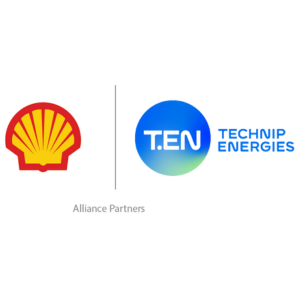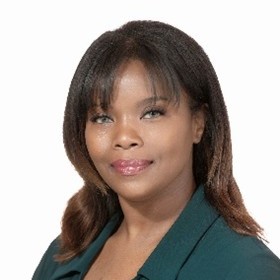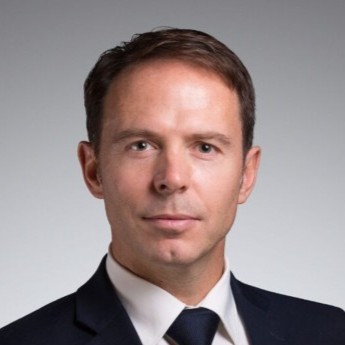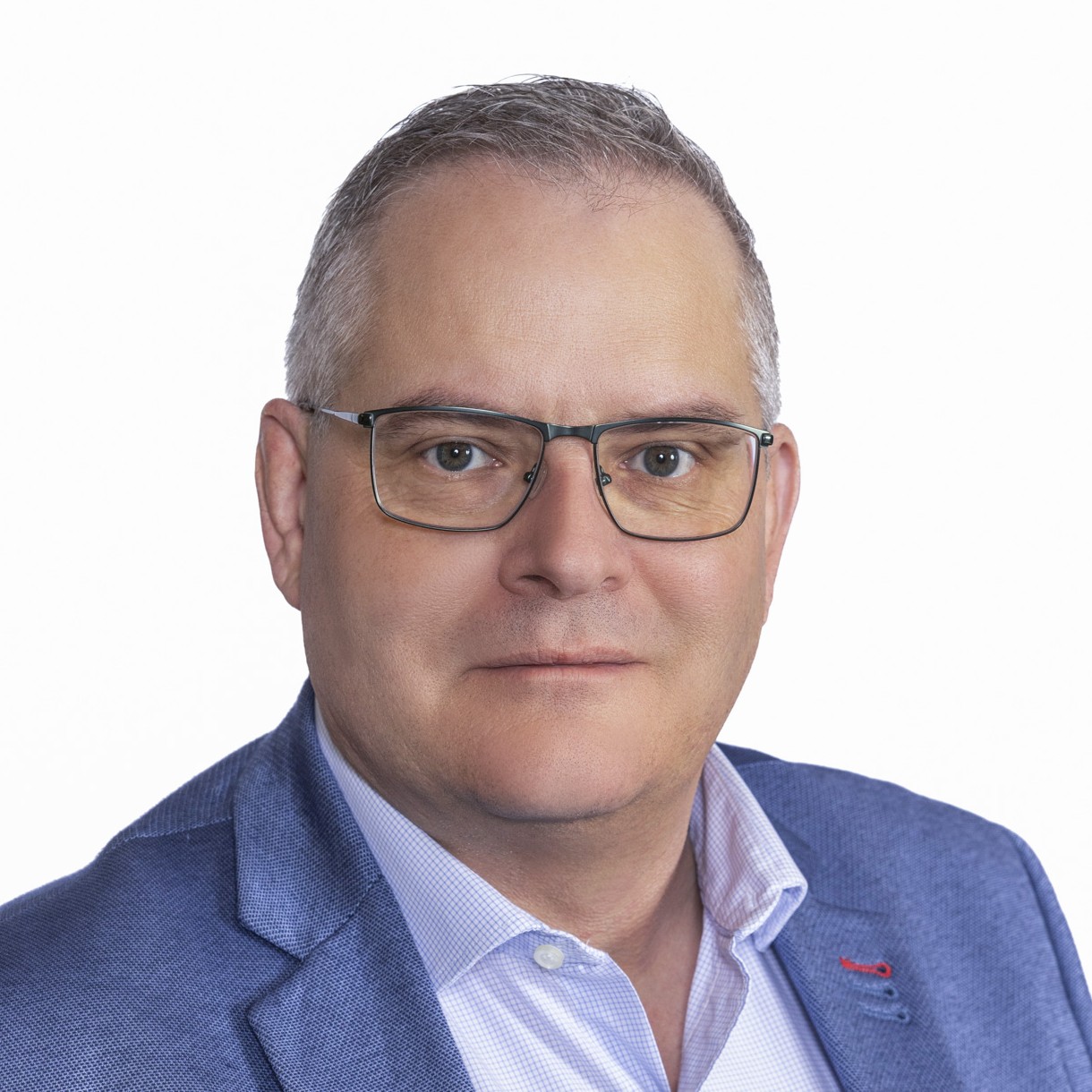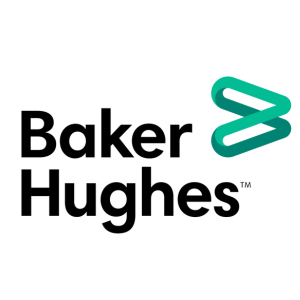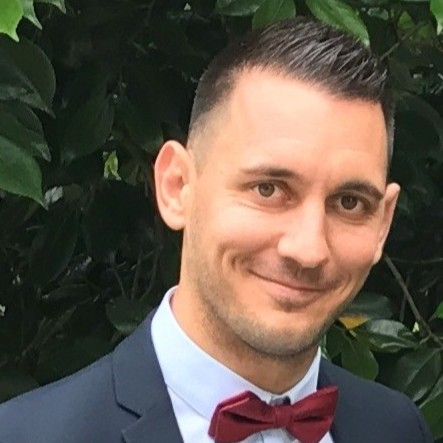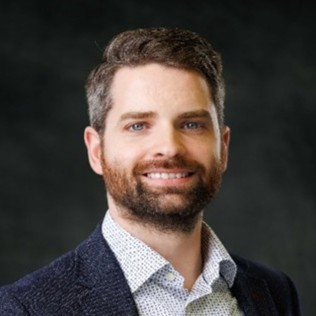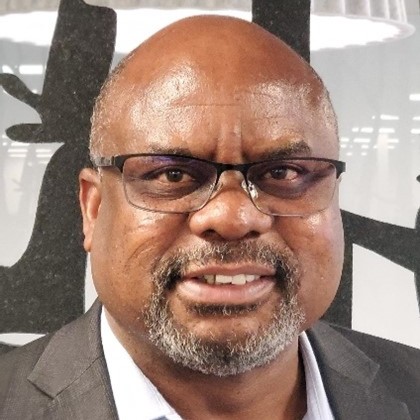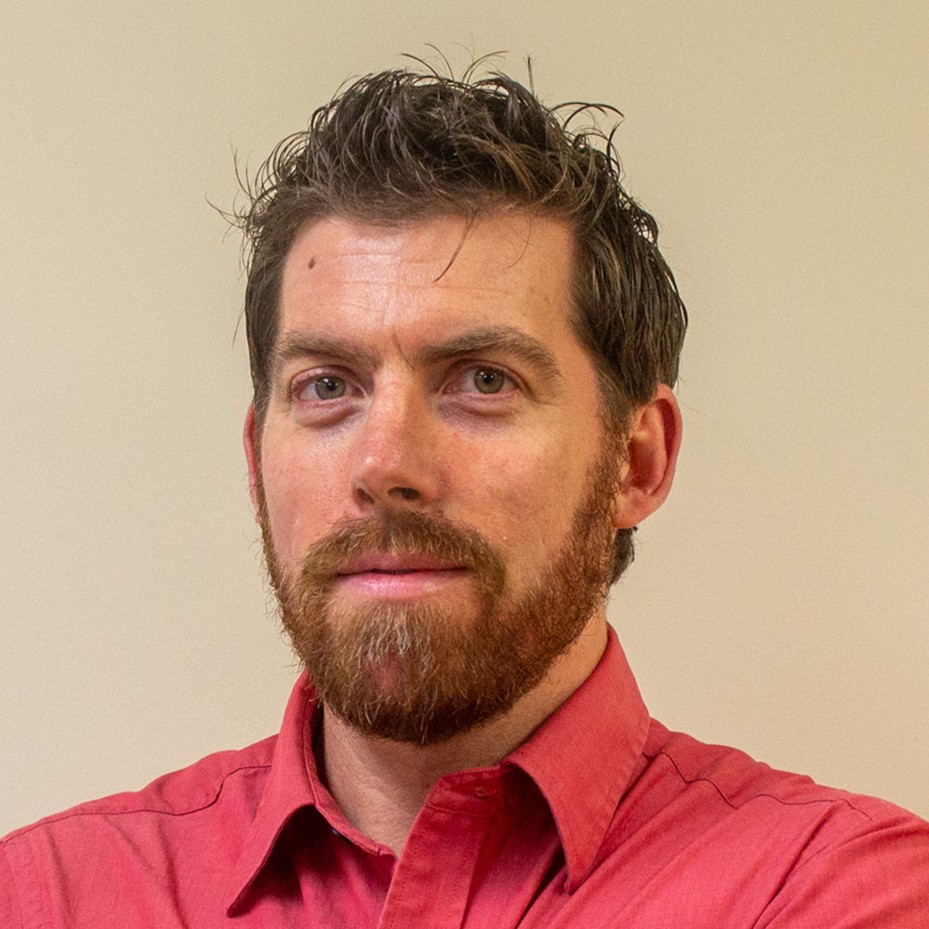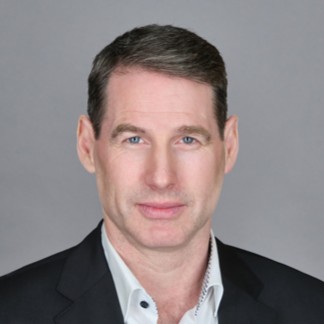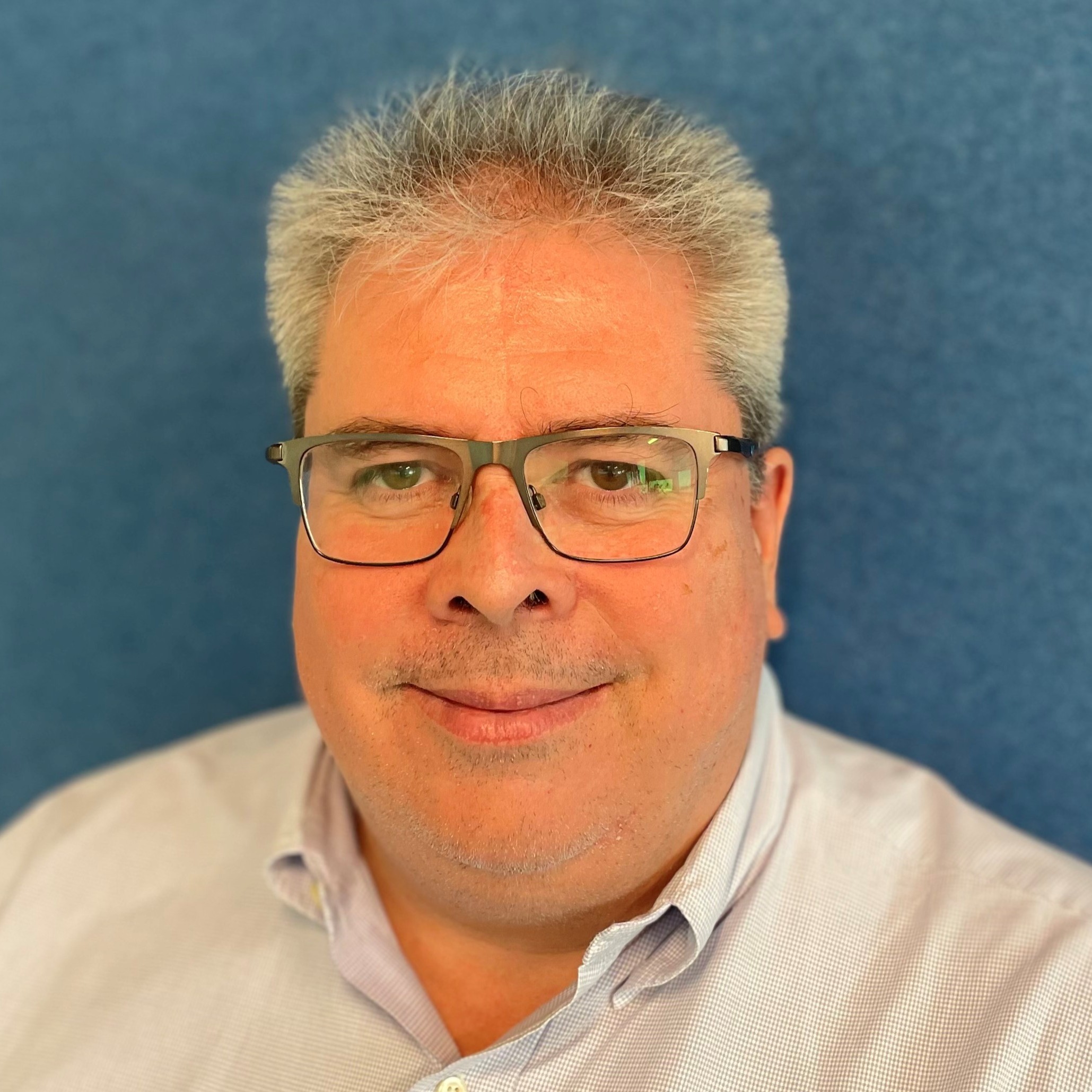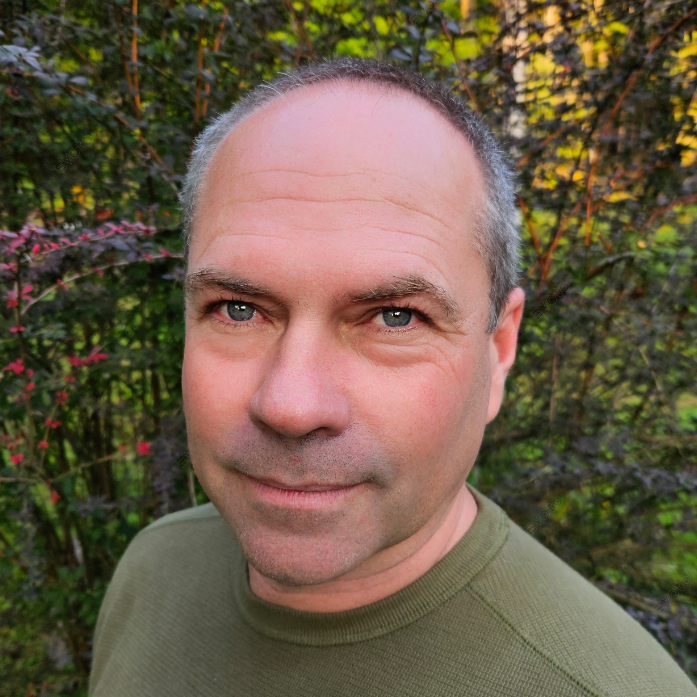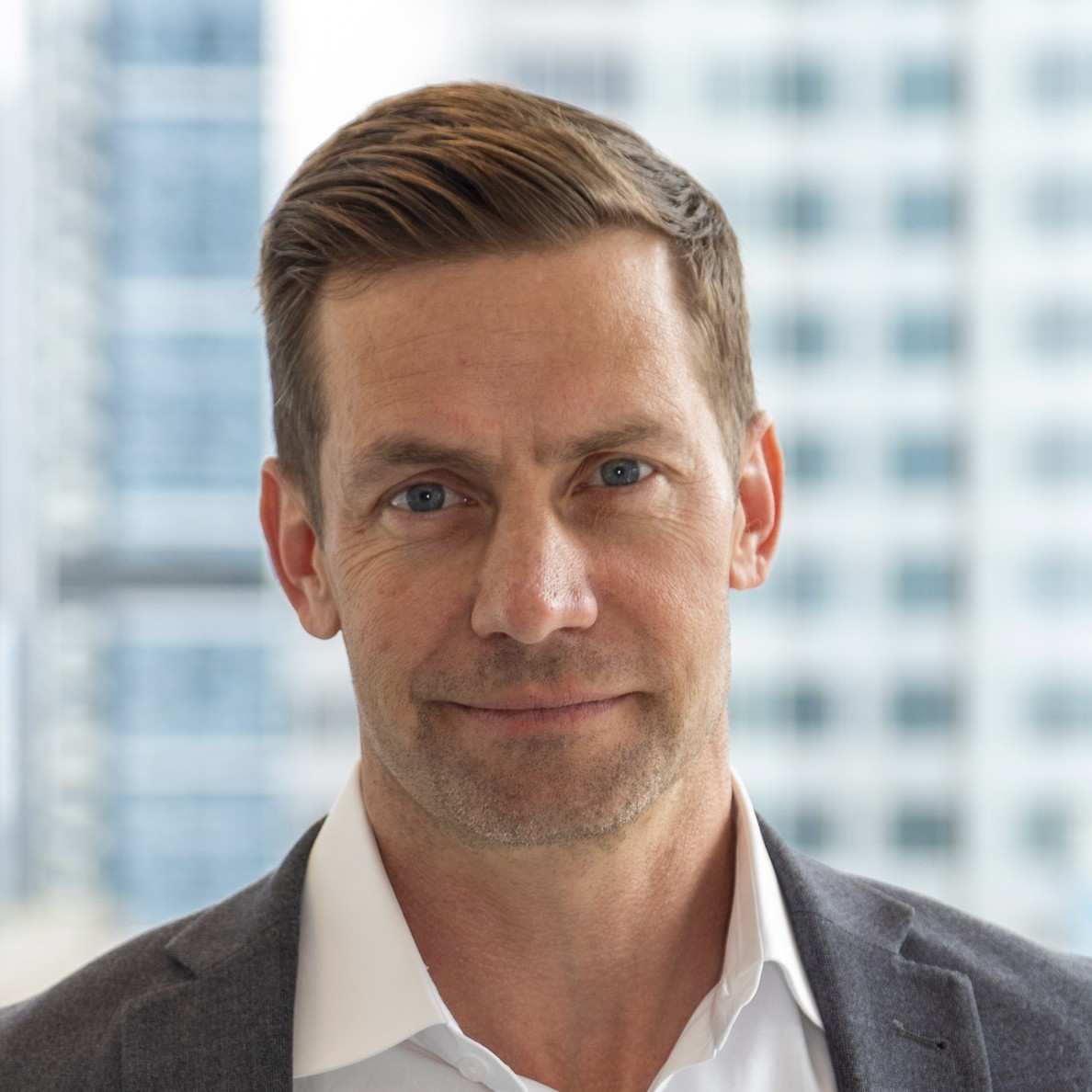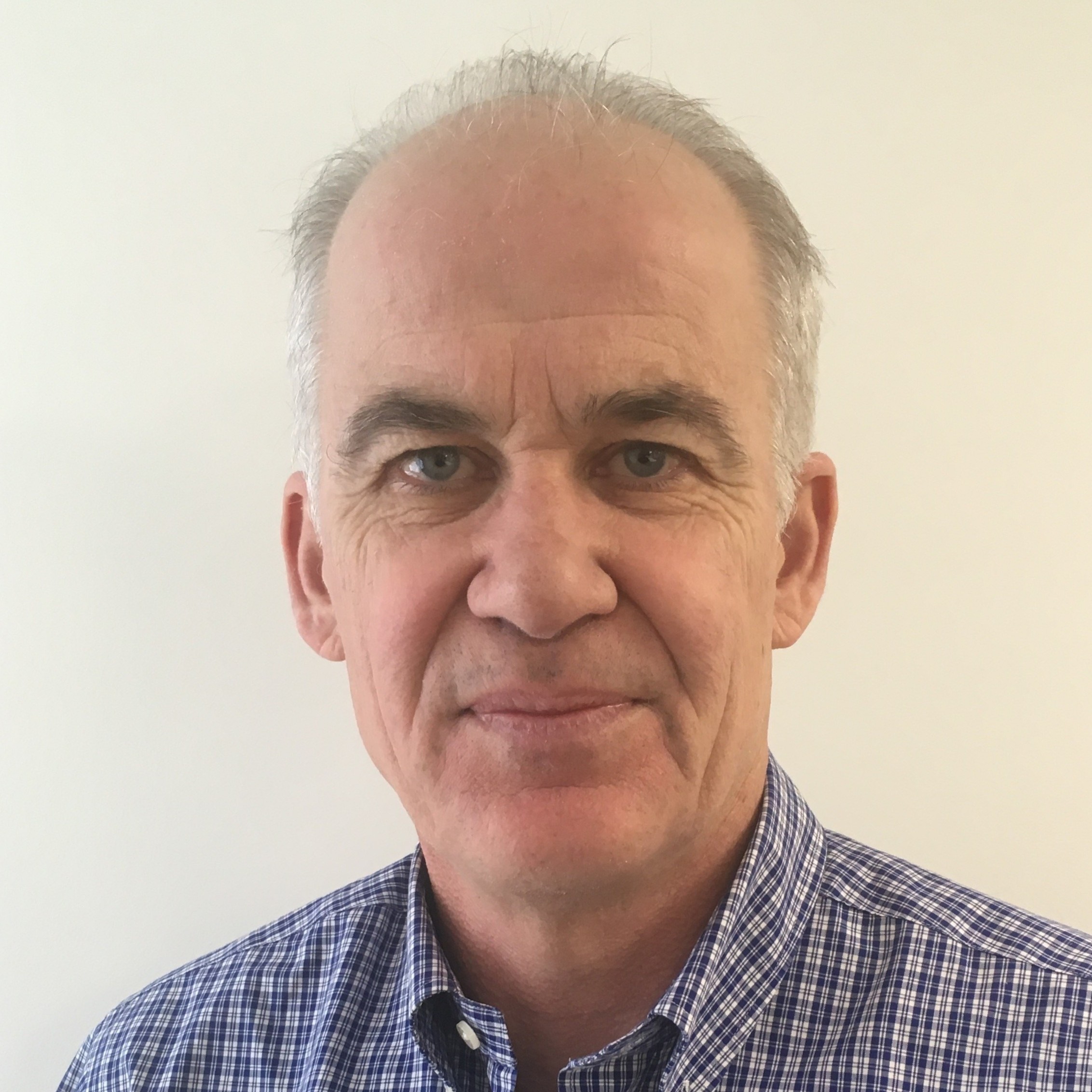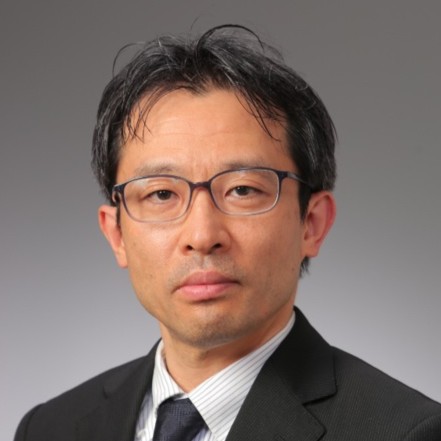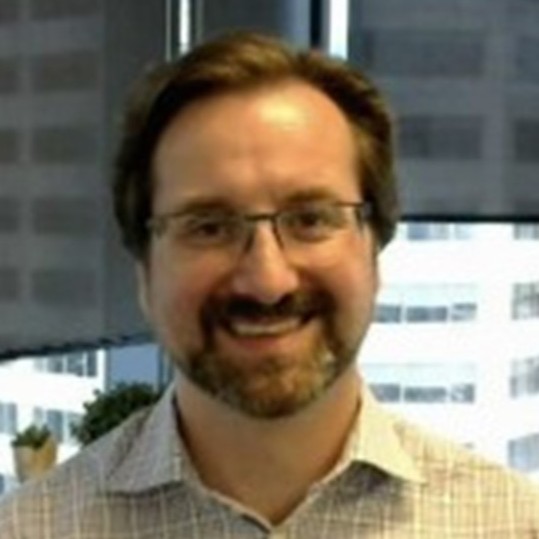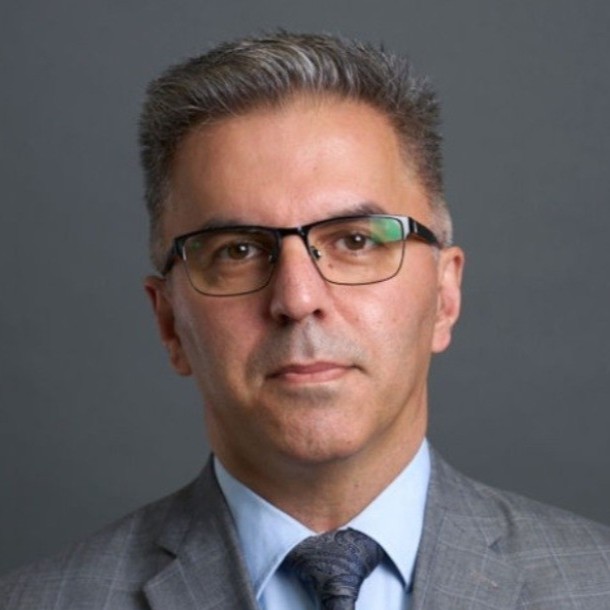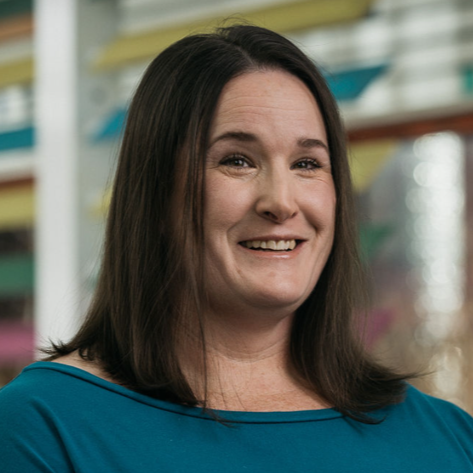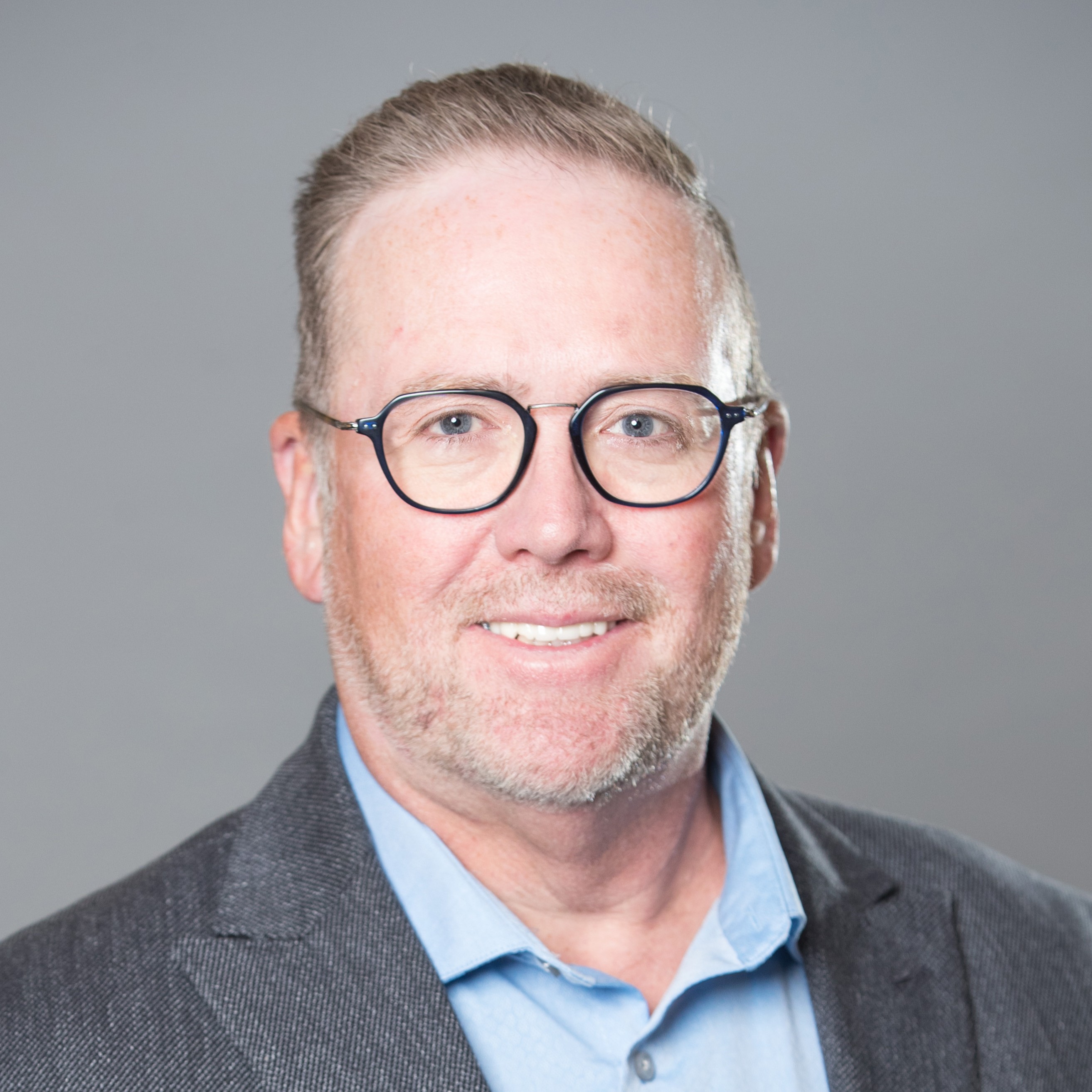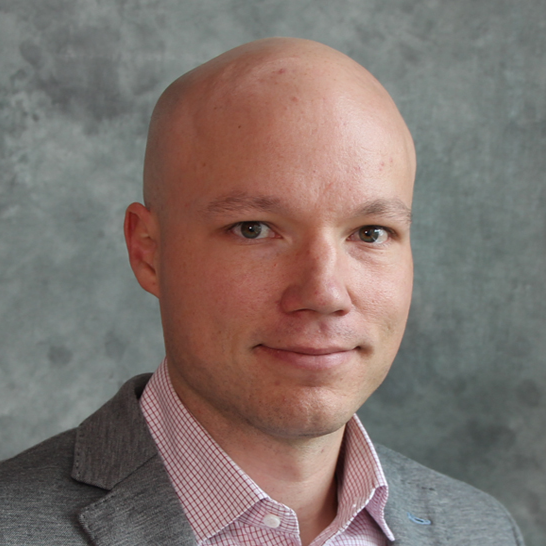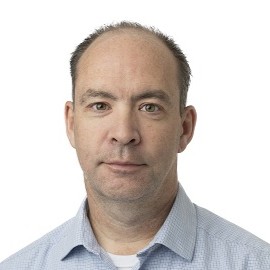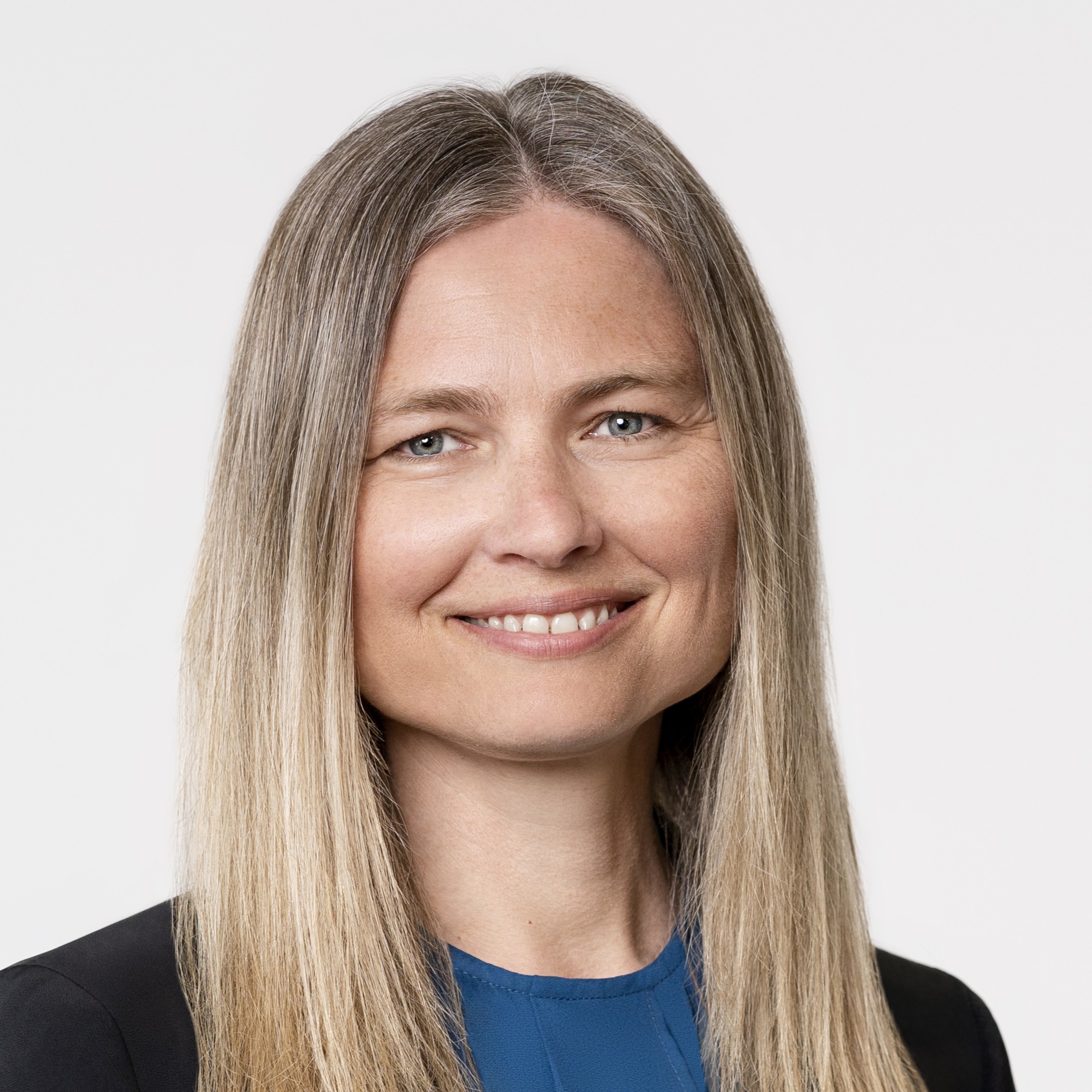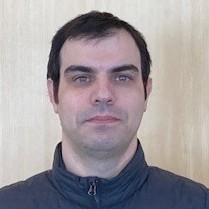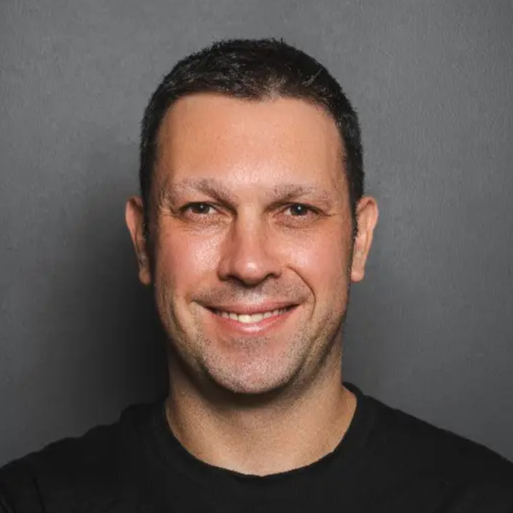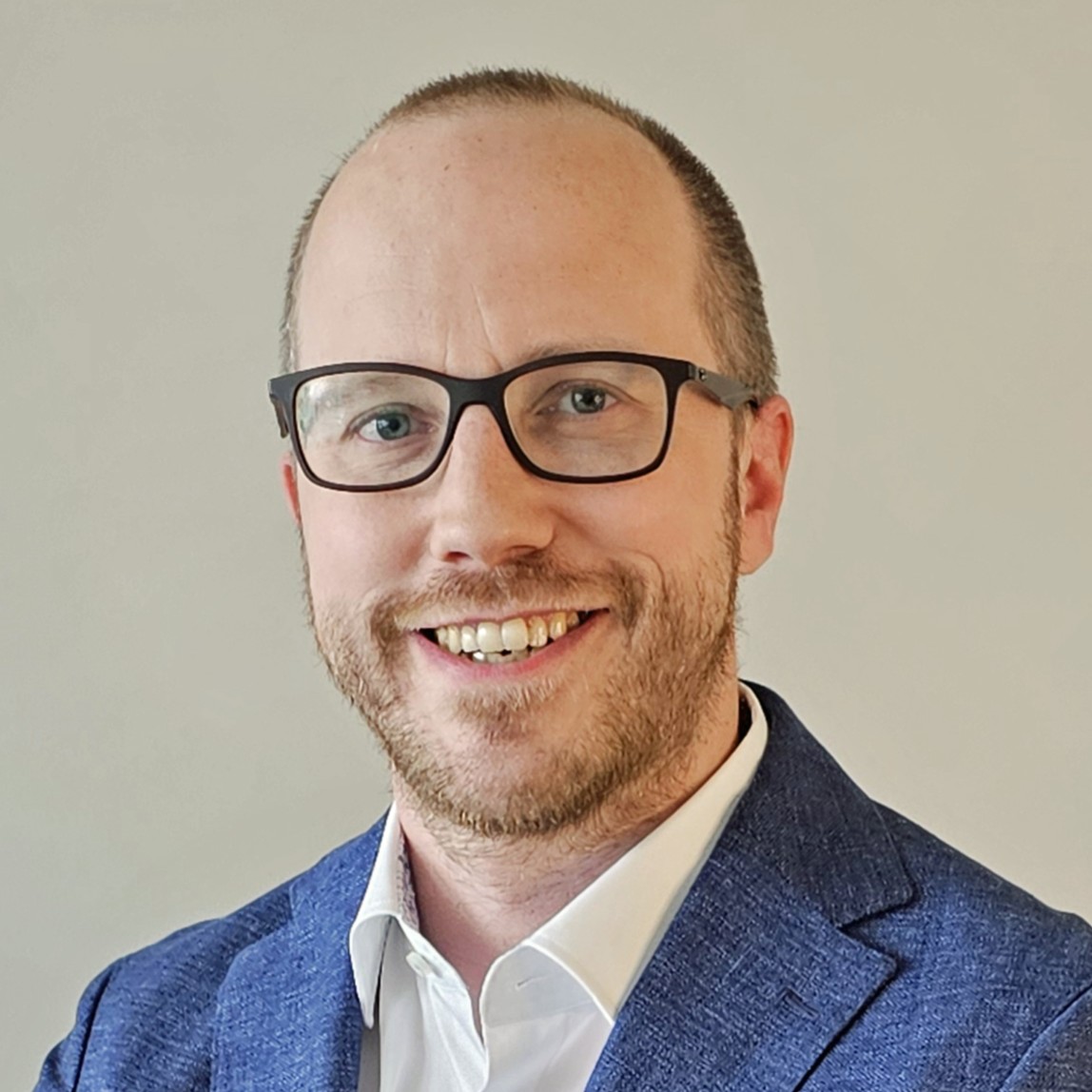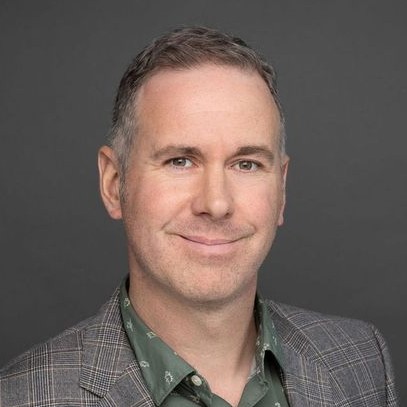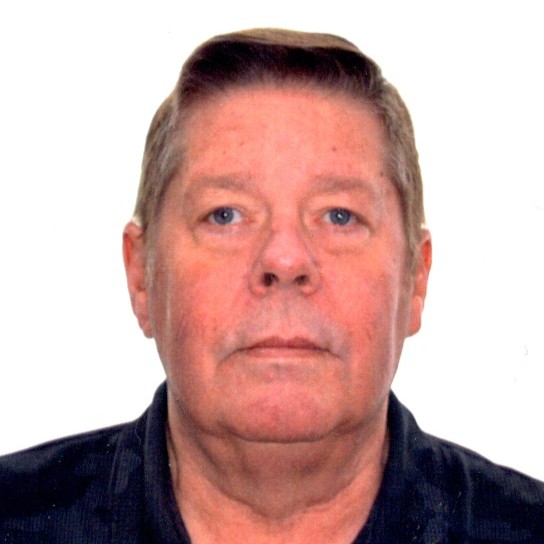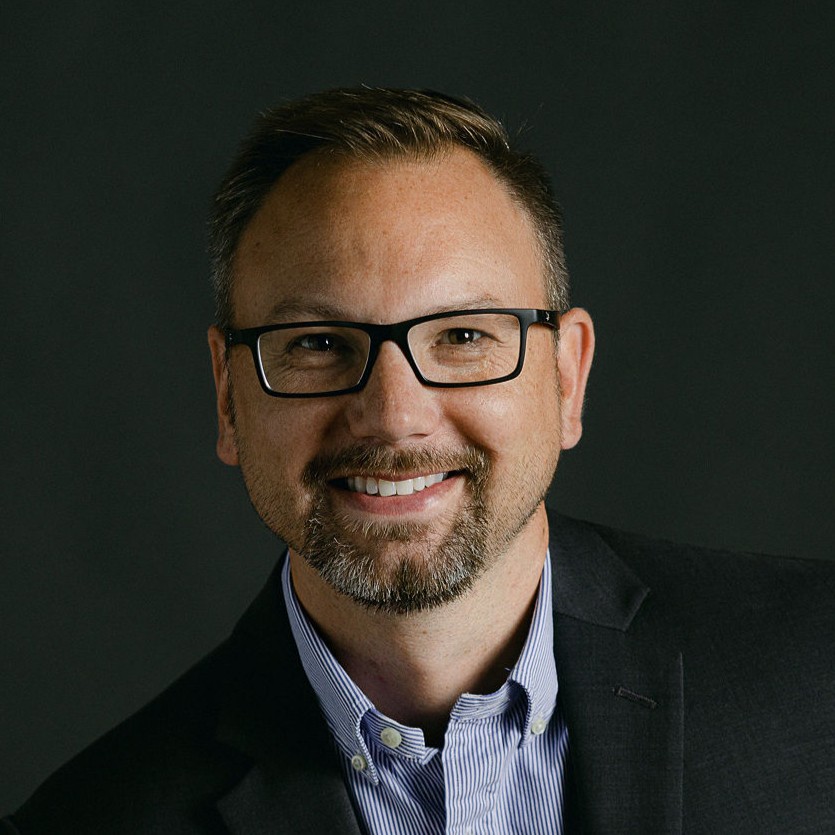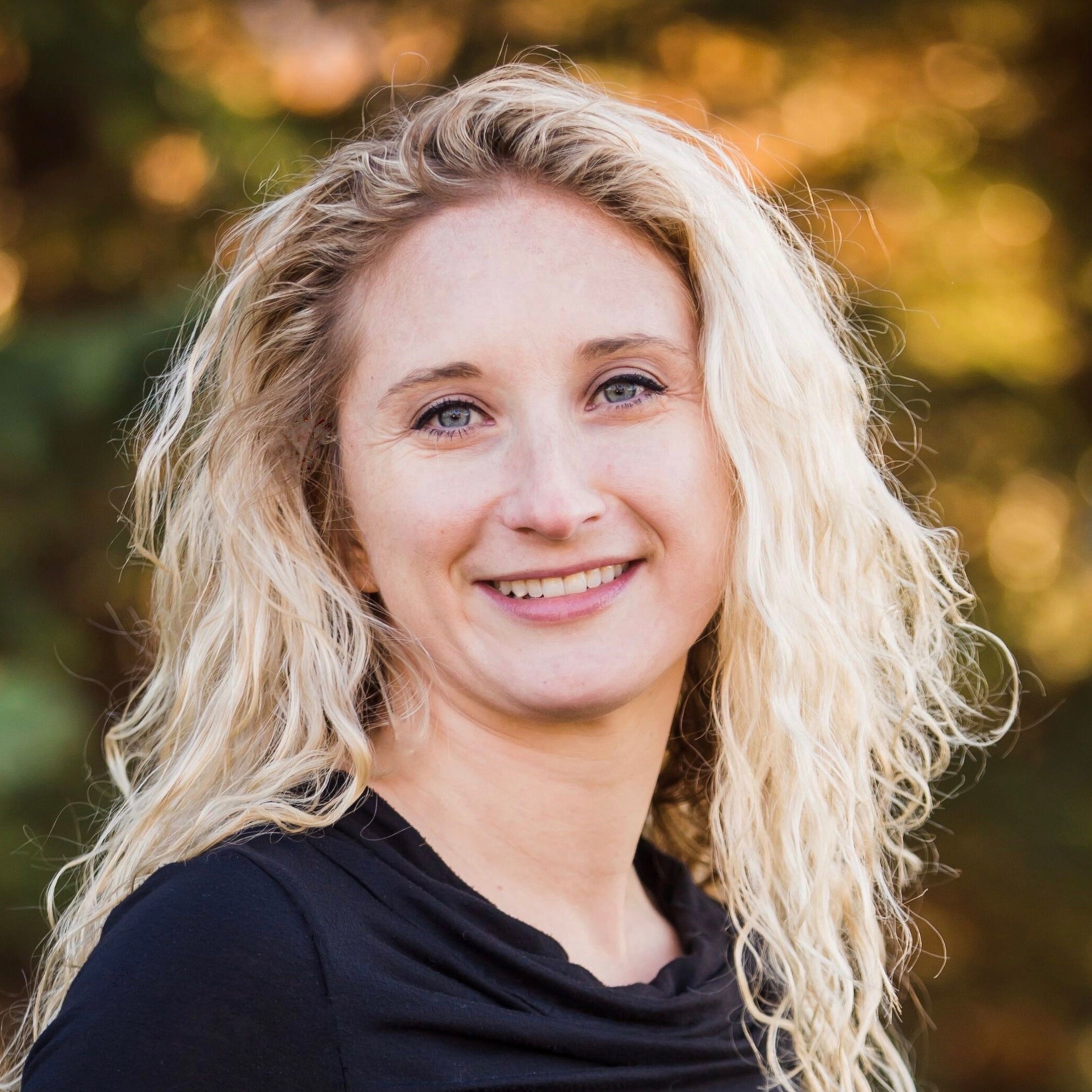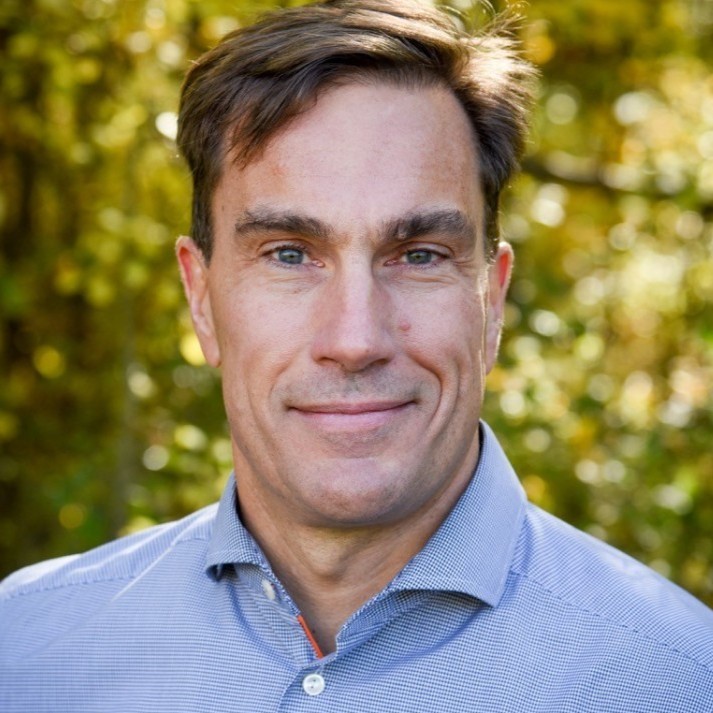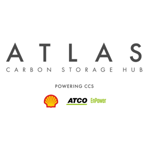- 10:00 AM
- 10:00 AM
- 10:30 AM
Making CCS Investable: Insights from Real Projects Across Power, Waste and Industry
Shell Catalysts & Technologies and Technip Energies have supported numerous projects worldwide – from power and cement to energy-from-waste and refining. Many of these are now progressing through F...
 Shell – Technip Energies Alliance Knowledge Bar, Exhibition Floor
Shell – Technip Energies Alliance Knowledge Bar, Exhibition Floor 10:30 AM - 11:10 AM
10:30 AM - 11:10 AM
Making CCS Investable: Insights from Real Projects Across Power, Waste and Industry
 10:30 AM - 11:10 AM
10:30 AM - 11:10 AM Shell – Technip Energies Alliance Knowledge Bar, Exhibition Floor
Shell – Technip Energies Alliance Knowledge Bar, Exhibition Floor
Shell Catalysts & Technologies and Technip Energies have supported numerous projects worldwide – from power and cement to energy-from-waste and refining. Many of these are now progressing through FEED, FID or into execution. The two organisations have established a global exclusive alliance to support carbon capture projects, combining Shell’s CANSOLV* CO₂ Capture System with Technip Energies’ expertise in project design and execution. Drawing on real projects such as SaskPower Boundary Dam (Canada), Calpine Baytown (USA), and Net Zero Teesside Power and Viridor Runcorn (UK), this session will explore how industrial CCS projects are being de-risked and delivered. It will highlight the integration, design and operating challenges that matter most to investment decisions and show how alliance-based delivery models are helping to make CCS projects viable, investable and operationally robust.
- 10:30 AM
Open Access Wabamun Carbon Hub Development Journey
Open Access Wabamun Carbon Hub is being developed by Enbridge, north and west of Edmonton, to provide CO₂ transportation and storage solutions, helping to decarbonize large industrial emitters near...
 Enbridge Knowledge Bar, Exhibition Floor
Enbridge Knowledge Bar, Exhibition Floor 10:30 AM - 11:10 AM
10:30 AM - 11:10 AM
Open Access Wabamun Carbon Hub Development Journey
 10:30 AM - 11:10 AM
10:30 AM - 11:10 AM Enbridge Knowledge Bar, Exhibition Floor
Enbridge Knowledge Bar, Exhibition Floor
Open Access Wabamun Carbon Hub is being developed by Enbridge, north and west of Edmonton, to provide CO₂ transportation and storage solutions, helping to decarbonize large industrial emitters near the Alberta Industrial Heartland. Since securing evaluation rights, Enbridge has conducted multiple activities to derisk the subsurface, which included drilling and testing two wells, acquiring large-scale 3D seismic data, analyzing core samples, as well as planning MMV, and undertaking pipeline and other surface development work. This presentation will provide an update on development progress and pore space evaluation activities. It will also share valuable insights and lessons learned from the journey toward commercializing this large-scale carbon sequestration hub, addressing both technical and non-technical aspects.
- 10:30 AM
Collaborating to Improve the Economic Viability of CCUS Projects: How Koch Engineered Solutions Has Worked with Partners to Advance Project Feasibility
Koch Engineered Solutions is actively engaged in collaborative efforts to advance large-scale Carbon Capture, Utilization, and Storage (CCUS) projects with a primary focus on enhancing their econom...
 Pathways Alliance Knowledge Bar, Exhibition Floor
Pathways Alliance Knowledge Bar, Exhibition Floor 10:30 AM - 11:10 AM
10:30 AM - 11:10 AM
Collaborating to Improve the Economic Viability of CCUS Projects: How Koch Engineered Solutions Has Worked with Partners to Advance Project Feasibility
 10:30 AM - 11:10 AM
10:30 AM - 11:10 AM Pathways Alliance Knowledge Bar, Exhibition Floor
Pathways Alliance Knowledge Bar, Exhibition Floor
Koch Engineered Solutions is actively engaged in collaborative efforts to advance large-scale Carbon Capture, Utilization, and Storage (CCUS) projects with a primary focus on enhancing their economic viability through innovative cost and operational efficiency strategies. This work addresses critical cost drivers by targeting significant reductions in capital expenditures, operating costs, and installation durations, which are often major barriers to commercial-scale deployment. By leveraging cutting-edge equipment design, modularization, and integrated project delivery methods, Koch Engineered Solutions and its partners aim to streamline project execution timelines and improve supply chain resilience. These initiatives are needed given the current challenges in the Canada and the general global market, which have heightened the need for more economically feasible CCUS solutions. By introducing optimized engineering designs and new to market technologies, coupled with collaborative project solutions, Koch Engineered Solutions is helping to reduce the total cost of ownership and accelerate project deployment. This approach not only improves the attractiveness of CCUS projects to investors but also supports the broader industry goal of scalable carbon management solutions critical to achieving decarbonization targets. The presentation will outline several examples on existing and developing CCUS projects where we have significantly reduced capital and opex costs. We will provide a high-level framework of our approach. methodologies, and technology innovations driving these outcomes, providing a framework for replicable, cost-effective CCUS project development.
- 10:30 AM
The Critical Role of Turbomachinery for a Reliable and Cost-Effective Implementation of Hot Potassium Carbonate Capture Technology in Hard-To-Abate Industries
Carbon Capture, Utilization, and Storage (CCUS) is increasingly recognized as a key solution to addressing the Energy Trilemma—balancing energy reliability, affordability, and sustainability. Hot...
 Baker Hughes Knowledge Bar, Exhibition Floor
Baker Hughes Knowledge Bar, Exhibition Floor 10:30 AM - 11:10 AM
10:30 AM - 11:10 AM
The Critical Role of Turbomachinery for a Reliable and Cost-Effective Implementation of Hot Potassium Carbonate Capture Technology in Hard-To-Abate Industries
 10:30 AM - 11:10 AM
10:30 AM - 11:10 AM Baker Hughes Knowledge Bar, Exhibition Floor
Baker Hughes Knowledge Bar, Exhibition Floor
Carbon Capture, Utilization, and Storage (CCUS) is increasingly recognized as a key solution to addressing the Energy Trilemma—balancing energy reliability, affordability, and sustainability. Hot Potassium Carbonate (HPC) is a CO2 capture process based on inorganic solvents: the technology is broadly adopted in gas processing and hydrogen production with a significant number of plants operated worldwide. Different sectors are looking at HPC technology as promising for post-combustion carbon capture applications, with several pilots being deployed and a growing number of commercial projects at different stages of deployment. Due to the nature of the reaction, a certain driving force is necessary to initiate absorption efficiently and reach the target capture rate. As a result, the compression of flue gas to increase CO2 partial pressure becomes a critical step in the process, making high-performance turbomachinery equipment essential. Upon capture of the CO2, the lean flue gas is then directed to an expander where part of the energy utilized for the compression of the flue gas is recovered, thus improving the economics of the overall plant. In this study, we briefly outline the advantages associated with the technology’s low-cost, commodity-based inorganic solvent, that features no harmful emissions and good tolerance to contaminants. These features overcome typical drawbacks of commercially available amine-based technologies. This study highlights the essential role of turbomachinery in enabling safe, reliable, and cost-effective carbon capture. By showcasing Baker Hughes’ integrated turbomachinery and process solutions, we demonstrate how these technologies are key to the successful deployment and scalability of capture systems.
- 10:30 AM
Learnings from a Decade of Operations at SaskPower
The Canadian power generator SaskPower has operated a 1 Mt/y post-combustion carbon capture facility for over 10 years, using Shell’s CANSOLV CO₂ Capture System with ongoing support from Shell Cata...
 Shell – Technip Energies Alliance Knowledge Bar, Exhibition Floor
Shell – Technip Energies Alliance Knowledge Bar, Exhibition Floor 10:30 AM - 11:10 AM
10:30 AM - 11:10 AM
Learnings from a Decade of Operations at SaskPower
 10:30 AM - 11:10 AM
10:30 AM - 11:10 AM Shell – Technip Energies Alliance Knowledge Bar, Exhibition Floor
Shell – Technip Energies Alliance Knowledge Bar, Exhibition Floor
The Canadian power generator SaskPower has operated a 1 Mt/y post-combustion carbon capture facility for over 10 years, using Shell’s CANSOLV CO₂ Capture System with ongoing support from Shell Catalysts & Technologies. Boundary Dam 3 (BD3) pioneered post-combustion carbon capture and storage and overcame early first-of-a-kind challenges, reshaping global understanding of CCS. In this session, experts will share key operational insights and learnings that enabled them to deliver the BD3 CCS project and prove that carbon capture can be deployed at scale, even in the most demanding conditions. Reflecting on the progression of the CCS industry over ten years and its future direction, this session will also explore how deep expertise, commercially effective solutions, trusted technology and commitment to successful outcomes are key to making carbon capture investable.
- 10:30 AM
Induced Seismicity Requirements for Fluid Disposal in Alberta
The Alberta Energy Regulator (AER) is responsible for fluid disposal activities through out the life cycle of a fluid disposal operations. The current induced seismicity requirements outline in AER...
 Enbridge Knowledge Bar, Exhibition Floor
Enbridge Knowledge Bar, Exhibition Floor 10:30 AM - 11:10 AM
10:30 AM - 11:10 AM
Induced Seismicity Requirements for Fluid Disposal in Alberta
 10:30 AM - 11:10 AM
10:30 AM - 11:10 AM Enbridge Knowledge Bar, Exhibition Floor
Enbridge Knowledge Bar, Exhibition Floor
The Alberta Energy Regulator (AER) is responsible for fluid disposal activities through out the life cycle of a fluid disposal operations. The current induced seismicity requirements outline in AER’s Directive 065: Resources Applications for Oil and Gas Reservoirs applies to all disposal fluid classes described in Directive 051: Injection and Disposal Wells – Well Classifications, Completions, Logging, and Testing Requirements. The presentation will provide an overview of the requirements pertaining to the following: • Applying for a new fluid disposal well. • Amending the operating conditions of an existing fluid disposal well. • When an existing disposal well is linked to a seismic event. • Monitoring, mitigation, and response plan.
- 10:30 AM
Natural Tracers in CCS: Applying Molecular and Isotopic Geochemistry in MMV Frameworks
As the deployment of carbon capture and storage (CCS) projects continues to grow, the importance of accurately evaluating and monitoring their effectiveness becomes increasingly critical. Comprehen...
 Pathways Alliance Knowledge Bar, Exhibition Floor
Pathways Alliance Knowledge Bar, Exhibition Floor 10:30 AM - 11:10 AM
10:30 AM - 11:10 AM
Natural Tracers in CCS: Applying Molecular and Isotopic Geochemistry in MMV Frameworks
 10:30 AM - 11:10 AM
10:30 AM - 11:10 AM Pathways Alliance Knowledge Bar, Exhibition Floor
Pathways Alliance Knowledge Bar, Exhibition Floor
As the deployment of carbon capture and storage (CCS) projects continues to grow, the importance of accurately evaluating and monitoring their effectiveness becomes increasingly critical. Comprehensive Measurement, Monitoring, and Verification (MMV) frameworks are essential for ensuring the long-term success and safety of CCS operations, incorporating natural tracer technologies such as molecular and isotopic geochemistry. Prior to injection, it is necessary to geochemically characterize the reservoir, overlying geology, and surrounding surface environment to establish baseline data for subsequent post-injection assessments. This baseline enables the identification of trapping mechanisms by analyzing fluid interactions within the reservoir after injection. Additionally, geochemical techniques are vital for detecting and characterizing fugitive gases, which may migrate along well casings or through soil near surface infrastructure, providing crucial information on potential fluid leakage pathways. Time-lapse geochemical studies further support long-term monitoring by evaluating caprock stability, fluid-rock interactions, and overall storage integrity over time. This overview highlights the broad applications of molecular and isotopic geochemistry in CCS projects, with a particular focus on MMV applications. The discussion includes the use of carbon and oxygen isotope analysis of CO₂, as well as carbon and hydrogen isotope analysis of natural gases, to track fluid movement, verify storage permanence, and assess reservoir conditions. By integrating these geochemical approaches into MMV strategies, CCS projects can improve monitoring accuracy, enhance regulatory compliance, and ensure the environmental safety of long-term carbon storage efforts.
- 10:30 AM
Efficient and Effective Carbon Capture for Canadian Industry Using the Chilled Ammonia Process
Baker Hughes presents the commercial-ready Chilled Ammonia Process (CAP) and illustrates its potential to make substantial contributions in the global decarbonization landscape by assisting custome...
 Baker Hughes Knowledge Bar, Exhibition Floor
Baker Hughes Knowledge Bar, Exhibition Floor 10:30 AM - 11:10 AM
10:30 AM - 11:10 AM
Efficient and Effective Carbon Capture for Canadian Industry Using the Chilled Ammonia Process
 10:30 AM - 11:10 AM
10:30 AM - 11:10 AM Baker Hughes Knowledge Bar, Exhibition Floor
Baker Hughes Knowledge Bar, Exhibition Floor
Baker Hughes presents the commercial-ready Chilled Ammonia Process (CAP) and illustrates its potential to make substantial contributions in the global decarbonization landscape by assisting customers in reducing their operational emissions. CAP was specifically developed to address the complexities of carbon dioxide capture from low-pressure flue gases produced by fossil-fuel-based power generation and industrial emission sources, including hard-to-abate sectors such as waste-to-energy, biomass-fired plants, cement, and steel industries. It is a post-combustion carbon capture method that employs a non-proprietary solvent formulation utilizing ammonia in aqueous solution. We will provide a concise overview of CAP technology and highlight its benefits, as well as discussing the results of a recent FEED study for integration of CAP technology in an existing large-scale application.
- 11:10 AM
Leveraging CCS to Generate New Revenue Streams & Decarbonize an Industry
Svante’s technology is targeted to industrial decarbonization including oil & gas, hydrogen, pulp & paper, lime, cement, steel, petrochemicals, and more. Svante’s filters are applicable to both dir...
 Shell – Technip Energies Alliance Knowledge Bar, Exhibition Floor
Shell – Technip Energies Alliance Knowledge Bar, Exhibition Floor 11:10 AM - 11:50 AM
11:10 AM - 11:50 AM
Leveraging CCS to Generate New Revenue Streams & Decarbonize an Industry
 11:10 AM - 11:50 AM
11:10 AM - 11:50 AM Shell – Technip Energies Alliance Knowledge Bar, Exhibition Floor
Shell – Technip Energies Alliance Knowledge Bar, Exhibition Floor
Svante’s technology is targeted to industrial decarbonization including oil & gas, hydrogen, pulp & paper, lime, cement, steel, petrochemicals, and more. Svante’s filters are applicable to both direct air capture (DAC) and point source industrial carbon dioxide capture applications. DAC and point source however use different adsorbent materials. The pulp and paper industry stands out among industrial sectors for its established use of waste biomass to power mill operations. This existing reliance on renewable energy sources positions pulp and paper mills as promising candidates for achieving negative emissions by integrating carbon capture and storage (CCS) technologies alongside biomass utilization. To target this opportunity, Svante has developed a Rapid Cycle Temperature Swing Adsorption (RC-TSA) process using structured solid sorbents as an alternative to traditional technologies. This study focuses on scaling up the CALF-20 Metal-Organic Framework (MOF) sorbent process for pulp and paper flue gas which demonstrates high resistance to steam, oxygen, and acidic gas contaminants such as NOₓ and SOₓ—making it particularly well-suited for pulp and paper flue gas applications. In addition, the use of low-grade energy sources (such as inlet flue gas, product CO2 cooling, and CO2 compressor trains) which is a unique feature that allows energy that would typically be considered a “waste product” and rejected to cooling system to be re-used for the regeneration step of the process and reduces the overall energy requirement for the system. The use of low temperature/waste heat for carbon capture operations provides heat integration opportunities with the mill to minimize the use of any fossil fuels and maximize the use of clean electricity. These integrations result in significant improvements in efficiency and lower emissions making it a great candidate for efficient and affordable carbon dioxide removal (CDR) from point-source capture carbon emissions. This presentation will present an overview of an integrated Svante carbon capture plant with a pulp mill and techno-economic assessment leveraging new revenue opportunity from biogenic CDR credits.
- 11:10 AM
Qualitative & Quantitative Risk Assessment supporting MMV Planning & Monitoring Solution
The development of safe and reliable CO₂ storage projects depends on a proactive risk management approach that balances early-phase risk identification with data-driven technical validation. Two co...
 Enbridge Knowledge Bar, Exhibition Floor
Enbridge Knowledge Bar, Exhibition Floor 11:10 AM - 11:50 AM
11:10 AM - 11:50 AM
Qualitative & Quantitative Risk Assessment supporting MMV Planning & Monitoring Solution
 11:10 AM - 11:50 AM
11:10 AM - 11:50 AM Enbridge Knowledge Bar, Exhibition Floor
Enbridge Knowledge Bar, Exhibition Floor
The development of safe and reliable CO₂ storage projects depends on a proactive risk management approach that balances early-phase risk identification with data-driven technical validation. Two complementary but distinct methodologies—Qualitative Risk Assessment (Bow Tie Analysis) and Quantitative Risk Assessment (QRA)—play critical roles in shaping Monitoring, Measurement & Verification (MMV) planning and monitoring solutions, throughout the project lifecycle. Applied sequentially or independently, they form a comprehensive risk management framework that ensures safe, efficient, and sustainable CO₂ storage operations across the entire project lifecycle.
- 11:10 AM
Facilitating CCUS Hub Development: Insights from the National CCUS Assessment Framework
Canada’s National CCUS Assessment Framework (NCAF) is a decision-support platform developed to help stakeholders evaluate cost-effective options for carbon capture, transport, and storage infrastru...
 Pathways Alliance Knowledge Bar, Exhibition Floor
Pathways Alliance Knowledge Bar, Exhibition Floor 11:10 AM - 11:50 AM
11:10 AM - 11:50 AM
Facilitating CCUS Hub Development: Insights from the National CCUS Assessment Framework
 11:10 AM - 11:50 AM
11:10 AM - 11:50 AM Pathways Alliance Knowledge Bar, Exhibition Floor
Pathways Alliance Knowledge Bar, Exhibition Floor
Canada’s National CCUS Assessment Framework (NCAF) is a decision-support platform developed to help stakeholders evaluate cost-effective options for carbon capture, transport, and storage infrastructure. By integrating emissions data, storage potential, multi-modal transport optimization, cost modeling, and life cycle analysis, NCAF supports evidence-based planning for the development of large-scale, interconnected CCUS networks. This presentation will highlight opportunities across Canada, considering both current and future CO₂ sources—including industrial facilities, blue hydrogen, and direct air capture (DAC).
- 11:10 AM
Carrots, Sticks & Carbon: A Comparative Economic Case Study of Carbon Transport & Storage
GLJ has partnered with Welligence Energy Analytics to provide a comprehensive overview of CCUS policies, project statuses and evolving hub concept economics. In this presentation, GLJ will model th...
 Baker Hughes Knowledge Bar, Exhibition Floor
Baker Hughes Knowledge Bar, Exhibition Floor 11:10 AM - 11:50 AM
11:10 AM - 11:50 AM
Carrots, Sticks & Carbon: A Comparative Economic Case Study of Carbon Transport & Storage
 11:10 AM - 11:50 AM
11:10 AM - 11:50 AM Baker Hughes Knowledge Bar, Exhibition Floor
Baker Hughes Knowledge Bar, Exhibition Floor
GLJ has partnered with Welligence Energy Analytics to provide a comprehensive overview of CCUS policies, project statuses and evolving hub concept economics. In this presentation, GLJ will model the economics of CCS hubs by leveraging real-world data from the Welligence CCUS platform and compare how the hub concept performs under both Canadian and U.S. incentives. Key components of the presentation will include an analysis of the compliance and voluntary incentives in each jurisdiction; deterministic economic modelling of theoretical CCS projects based on public analogs and Welligence CCUS project data; scenario analysis of the project economics based on different assumptions of incentives eligibility; and the application of stochastic modelling techniques to assess the impact of project cost uncertainties under the varying scenarios of incentive eligibility.
- 11:10 AM
Leading the Way on Low Carbon Power - Entropy iCCS TurbineTM
Entropy is building a first-of-kind clean power CCS project, planned to come online mid-2026. The Glacier Phase 2 CCS project includes carbon capture on a natural gas fired turbine, resultng in low...
 Shell – Technip Energies Alliance Knowledge Bar, Exhibition Floor
Shell – Technip Energies Alliance Knowledge Bar, Exhibition Floor 11:10 AM - 11:50 AM
11:10 AM - 11:50 AM
Leading the Way on Low Carbon Power - Entropy iCCS TurbineTM
 11:10 AM - 11:50 AM
11:10 AM - 11:50 AM Shell – Technip Energies Alliance Knowledge Bar, Exhibition Floor
Shell – Technip Energies Alliance Knowledge Bar, Exhibition Floor
Entropy is building a first-of-kind clean power CCS project, planned to come online mid-2026. The Glacier Phase 2 CCS project includes carbon capture on a natural gas fired turbine, resultng in low-carbon intensity electricity that will be used on-site and supplied to Alberta’s power grid. Entropy is a full-scope developer of commercial scale CCS projects – providing technology, expertise and capital. Entropy built a first-of-kind post-combustion CCS project at the Glacier gas plant in Saddle Hills County (in north-west Alberta, 99km from Grande Prairie) in 2022 and 2023. The Glacier CCS Phase 2 project, to decarbonize the remainder of emissions at the facility will result in both low-carbon baseload electricity and low-carbon natural gas. These low-carbon solutions through CCS, low-carbon natural gas and low-carbon power provide a path across a variety of industries to provide emissions reductions pathways to meet both regulatory and corporate objectives.
- 11:10 AM
Dense Phase CO2 Pipelines – Design Considerations
The design of dense phase CO2 pipelines represents some unique challenges and unknowns. Since there are relatively few of these pipelines in design, construction, or operation, this presentation wi...
 Enbridge Knowledge Bar, Exhibition Floor
Enbridge Knowledge Bar, Exhibition Floor 11:10 AM - 11:50 AM
11:10 AM - 11:50 AM
Dense Phase CO2 Pipelines – Design Considerations
 11:10 AM - 11:50 AM
11:10 AM - 11:50 AM Enbridge Knowledge Bar, Exhibition Floor
Enbridge Knowledge Bar, Exhibition Floor
The design of dense phase CO2 pipelines represents some unique challenges and unknowns. Since there are relatively few of these pipelines in design, construction, or operation, this presentation will help to highlight some of these specific challenges and provide pipeline designers with a guideline. These topics will all be discussed in a technical matter with direct reference to codes, specifications, and industry best practices. Water and Carbonic Acid CO2 + water + pressure = carbonic acid. Carbonic acid is extremely corrosive to carbon steel. With proper process design and drying, this risk can be mitigated. Metallurgy and Welding This is biggest concern for design. The industry standard is carbon steel. Existing projects have selected high grade steels due to the high pressure, presence of contaminants (NOx/SOx), and unknown effects of the service fluid. The metallurgy and welding procedures will be specialized. Design Temperature For many applications, the source of the CO2 is exhaust from fossil fuels. This could lead to high design temperatures. Pipeline coatings are very sensitive to high temperatures. During a blowdown the dense phase CO2 will flash causing the JT Effect. This could lead to cryogenic conditions. Planned blowdowns must be able to accommodate reasonable temperature drops. Hydraulics – Steady State and Transient The critical point for dense phase CO2 is ~7MPa. Adding a buffer to avoid any flashing and considering transient hydraulic spikes, the design pressure will exceed an ANSI 600 rating (9.93 MPa). If a midline pumping station is unavailable the required design pressure could exceed the ANSI 900 rating (14.9 MPa). This will lead to many extra costs including thicker line pipe and higher rated flanges and valves. The actual fluid behaviour of dense phase CO2 is still relatively unknown. Because it is a critical fluid and not an incompressible fluid (e.g. water), the transient hydraulic characteristics may be overstated. Stress Due to thick line pipe, low and high design temperatures, and the possibility of transient hydraulic spikes the stress design for dense phase CO2 pipelines can be complicated. There will likely be considerable thermal growth in the stress model. There could be water hammer at the bottom of hills. This will lead to high stress at bends and other features.
- 11:10 AM
Closing the Data Gap: De-risking Economics and Ensuring Safe Long-Term Carbon Storage
Carbon capture and storage (CCS) is increasingly seen as a critical pathway to achieving net-zero targets—but the success of this strategy hinges on the reliability of the data from the subsurface...
 Pathways Alliance Knowledge Bar, Exhibition Floor
Pathways Alliance Knowledge Bar, Exhibition Floor 11:10 AM - 11:50 AM
11:10 AM - 11:50 AM
Closing the Data Gap: De-risking Economics and Ensuring Safe Long-Term Carbon Storage
 11:10 AM - 11:50 AM
11:10 AM - 11:50 AM Pathways Alliance Knowledge Bar, Exhibition Floor
Pathways Alliance Knowledge Bar, Exhibition Floor
Carbon capture and storage (CCS) is increasingly seen as a critical pathway to achieving net-zero targets—but the success of this strategy hinges on the reliability of the data from the subsurface evaluation. While the concept of injecting CO₂ into geological reservoirs may be familiar to those in the oil and gas sector, derisking investments and ensuring safe long-term storage will require a fundamental shift in how data is acquired, assessed, and evaluated. Some CCS projects have built their economic models and feasibility assessments around a "minimum requirement" approach - relying on limited data and assumptions that may fall short of addressing the full spectrum of economic and safety risks associated with CO₂ storage. This presentation highlights the critical data gaps in geologic carbon storage and makes the case for a more rigorous, site-specific approach to data acquisition and testing. Key uncertainties include: • Storage capacity and injectivity of the reservoir, • Long-term integrity of caprocks, • Risks of induced seismicity due to pressure buildup, • Potential for CO₂ migration through faults, fractures, or legacy wells. The implications of these data gaps are substantial. A project that appears viable on paper may ultimately prove uneconomical. In more serious cases, a failure in containment could undermine the climate benefits of CCS, cause environmental harm, and diminish public and regulatory trust—resulting in costly delays, reputational damage, and setbacks to the broader adoption of carbon storage technologies. To address these challenges, this presentation advocates for a paradigm shift in subsurface evaluation practices. This includes comprehensive baseline reservoir characterization and geomechanical testing tailored specifically for CO₂ storage. By prioritizing high-quality, complete data from the outset, project developers, regulators, and stakeholders can build the confidence needed to advance CCS responsibly and at scale.
- 11:10 AM
Lessons Learned from BASF OASE® blue Technology Operations
Solvay/SIAD in Italy has been operating a carbon capture plant removing CO2 from flue gas streams since 2018. The plant was designed and constructed by TPI and utilizes BASF's OASE® blue technology...
 Baker Hughes Knowledge Bar, Exhibition Floor
Baker Hughes Knowledge Bar, Exhibition Floor 11:10 AM - 11:50 AM
11:10 AM - 11:50 AM
Lessons Learned from BASF OASE® blue Technology Operations
 11:10 AM - 11:50 AM
11:10 AM - 11:50 AM Baker Hughes Knowledge Bar, Exhibition Floor
Baker Hughes Knowledge Bar, Exhibition Floor
Solvay/SIAD in Italy has been operating a carbon capture plant removing CO2 from flue gas streams since 2018. The plant was designed and constructed by TPI and utilizes BASF's OASE® blue technology which was initially designed for MEA solvent system. The plant captures approximately 120 metric tons of CO2 per day for chemical utilization purpose and simultaneously supplying liquefied CO2 to external customers in the region. The flue gas stream originated from two major sources: a low-pressure off-gas stream from bicarbonate production and flue gas from lime kiln and coal combustion. Since startup of the unit, there have been various challenges following the decision to switch from MEA solvent system to OASE® blue technology. Key challenges observed in the unit were particulate and SO2 carryovers, high CO2 concentration in the feed gas, and solvent health management. To address and optimize these issues, countermeasures include improvement of pretreatment unit line up and adjustment of operational strategy to improve carbon capture performance. Additionally, the installation of an ion-exchange unit has proven to reduce HSS levels in the solvent effectively, decreasing the solvent make up rate into the unit. This achievement is outstanding as OASE blue solvent continues to perform exceptionally well in achieving the desired removal rate and producing a high purity CO2 product, even when operating with a heavily contaminated flue gas sources. Despite initial setbacks, the plant has demonstrated the economic viability and transformative potential of BASF's OASE blue technology. The collaborative efforts of BASF, TPI, and SIAD/Solvay have been crucial in ensuring the long-term robustness and reliability of the plant highlighting a valuable lesson learned.
- 11:50 AM
Carbon Circle: Modular, Open-source CCS Solutions Built on Norwegian Expertise
Initiated by the introduction of CO₂ tax on the Norwegian continental shelf in 1991, Norway has built one of the world’s most robust and practical foundations for CCS. This long-standing legacy in...
 Shell – Technip Energies Alliance Knowledge Bar, Exhibition Floor
Shell – Technip Energies Alliance Knowledge Bar, Exhibition Floor 11:50 AM - 12:30 PM
11:50 AM - 12:30 PM
Carbon Circle: Modular, Open-source CCS Solutions Built on Norwegian Expertise
 11:50 AM - 12:30 PM
11:50 AM - 12:30 PM Shell – Technip Energies Alliance Knowledge Bar, Exhibition Floor
Shell – Technip Energies Alliance Knowledge Bar, Exhibition Floor
Initiated by the introduction of CO₂ tax on the Norwegian continental shelf in 1991, Norway has built one of the world’s most robust and practical foundations for CCS. This long-standing legacy includes pioneering projects such as the Sleipner CO₂ storage project (1996), Technology Centre Mongstad (2012) and Longship (2025), which have contributed to unique operational insights and technology validation at scale. The experts of Carbon Circle build on hand-on experience of this heritage to offer advanced post-combustion carbon capture solutions, combining Norwegian process expertise with full EPC capabilities. Carbon Circle’s CCS technology platform is based on CESAR1, a high-performance, open-source amine solvent developed through EU collaboration and extensively investigated and verified at numerous sites, including TCM. By leveraging CESAR1, we provide clients with a transparent, flexible, and non-proprietary solution that ensures operational reliability without licensing constraints. Carbon Circle delivers pre-engineered, modular capture plants designed for rapid deployment, cost efficiency, and ease of integration into existing industrial sites. With a clear focus on practical implementation, scalability, and technology openness, Carbon Circle is committed to accelerating the deployment of CCS across hard-to-abate sectors.
- 11:50 AM
Advanced Contaminant Management in CCTS: Off-Spec Fluid Handling and Operational Resilience
This study aims to explore the impact of impurities in Carbon Capture and Storage (CCS) chains, focusing on managing CO2-rich fluid off-spec scenarios and operational challenges. The scope includes...
 Enbridge Knowledge Bar, Exhibition Floor
Enbridge Knowledge Bar, Exhibition Floor 11:50 AM - 12:30 PM
11:50 AM - 12:30 PM
Advanced Contaminant Management in CCTS: Off-Spec Fluid Handling and Operational Resilience
 11:50 AM - 12:30 PM
11:50 AM - 12:30 PM Enbridge Knowledge Bar, Exhibition Floor
Enbridge Knowledge Bar, Exhibition Floor
This study aims to explore the impact of impurities in Carbon Capture and Storage (CCS) chains, focusing on managing CO2-rich fluid off-spec scenarios and operational challenges. The scope includes evaluating the effects of various impurities on CCS design and performance and developing strategies for effective operational management to ensure system reliability and compliance with emission standards. The research methodology involves a comprehensive review of existing literature and case studies to understand the behavior of impurities such as SOx, NOx, and non-condensable gases in CCS systems. The study also examines operational scenarios, including equipment failures like glycol pump and caustic wash system malfunctions, and their impact on CO2 purity and system performance. Additionally, the impact of these operational issues and off-spec fluid management on pipeline integrity and performance under varying temperature conditions is analyzed. Best practices for managing these scenarios, such as maintaining spare parts and implementing robust monitoring systems, are also evaluated. The results indicate that impurities can significantly alter the physical and chemical properties of CO2 streams, affecting pipeline integrity, and storage efficiency. High-purity CO2 capture technologies, while reducing impurity levels, require substantial capital investment. Operational management strategies, such as having spare pumps and real-time monitoring, are crucial for minimizing downtime and maintaining system performance. For example, a glycol pump failure without a spare can lead to prolonged offline periods, while a caustic wash failure can cause SOx spikes, necessitating immediate corrective actions to prevent off-spec CO2 emissions. The study concludes that a balanced approach, combining advanced CO2 capture technologies with effective operational management, is essential for the effective contaminant management of CCS systems. Understanding the specific impacts of impurities and preparing for potential off-spec management scenarios can enhance system reliability and performance. This research underscores the importance of practical, cost-effective solutions in managing CCS chains, contributing to the broader goal of reducing greenhouse gas emissions and mitigating climate change.
- 11:50 AM
Groundbreaking Carbon Capture Performance and its Ability to Help Meet the Growing Demand for Clean, Firm Power Today
Today’s demand for clean, firm power needs solutions that can deliver at scale now. Too often, carbon capture on natural gas power generation is overshadowed by renewables. But carbon capture techn...
 Pathways Alliance Knowledge Bar, Exhibition Floor
Pathways Alliance Knowledge Bar, Exhibition Floor 11:50 AM - 12:30 PM
11:50 AM - 12:30 PM
Groundbreaking Carbon Capture Performance and its Ability to Help Meet the Growing Demand for Clean, Firm Power Today
 11:50 AM - 12:30 PM
11:50 AM - 12:30 PM Pathways Alliance Knowledge Bar, Exhibition Floor
Pathways Alliance Knowledge Bar, Exhibition Floor
Today’s demand for clean, firm power needs solutions that can deliver at scale now. Too often, carbon capture on natural gas power generation is overshadowed by renewables. But carbon capture technology is available now as an important part of the clean energy mix that can meet today’s unprecedented demand and deliver clean, reliable, and cost-effective power capacity. ION Clean Energy has over 20,000 hours of successful pilot testing of their transformative ICE-31™ carbon capture technology. Learn about the performance of their technology across their various pilot campaigns and hear how CCS can be an important part of the solution to meet our need for decarbonized power sooner than later.
- 11:50 AM
Updated for MHI KM CDR Process™
Mitsubishi Heavy Industries, Ltd. (MHI) developed the high-efficiency post-combustion CO2 capture technology known as the KM CDR Process (TM) with Kansai Electric Power Co., Inc. (KEPCO). Eighteen...
 Baker Hughes Knowledge Bar, Exhibition Floor
Baker Hughes Knowledge Bar, Exhibition Floor 11:50 AM - 12:30 PM
11:50 AM - 12:30 PM
Updated for MHI KM CDR Process™
 11:50 AM - 12:30 PM
11:50 AM - 12:30 PM Baker Hughes Knowledge Bar, Exhibition Floor
Baker Hughes Knowledge Bar, Exhibition Floor
Mitsubishi Heavy Industries, Ltd. (MHI) developed the high-efficiency post-combustion CO2 capture technology known as the KM CDR Process (TM) with Kansai Electric Power Co., Inc. (KEPCO). Eighteen (18) commercial plants with CO2 capacities ranging from 0.3 to 4,776 tons per day have been delivered around the world as of March 2025. This process efficiently captures CO2 from various facilities, including power plant flue gas, and is contributing to the energy transition. Specifically, MHI demonstrated very high CO2 capture (over 99%) in a long-term test campaign at KEPCO / MHI pilot plant and Technology Centre Mongstad (TCM), Norway in 2021. ExxonMobil and MHI have entered a CO2 capture technology partnership in 2022. Leveraging the strengths of both companies to meet customer needs, MHI and ExxonMobil will provide each strength in CO2 capture technology and CO2 transportation/storage, respectively. In addition, both works together to develop next generation amine solvent technology for CO2 capture. This joint effort will ensure that all customers have a comprehensive end-to-end solution to drive a low-carbon future. Not satisfied with operating numerous commercial plants, KM CDR process (TM) continues to improve to reduce energy consumption and CO2 capture cost through further development of proprietary solvent and optimization of process system. Below are the recent notable updates: 1. Conducted pilot tests on various facilities such as biomass, waste, gas engines, ships, cement plants, blast furnace, wood pellet plants, paper mills. Based on these results, an appropriate design approach was established for each flue gas considering the effects of impurities in flue gas and its countermeasures. 2. Conducted many integration studies with cement plants, FPSO, ships, CCGT and others. These integration studies include optimization of the heat recovery system between host unit and CO2 capture, and flue gas impurity removal treatment. A closer study of a heat pump using low-temperature waste heat sources both inside and outside the CO2 capture plant was also conducted. 3. A CAPEX reduction study was carried out for the CO2 capture unit, which accounts for a large cost in a CCS project. This includes a wide range of efforts such as standardization of the unit, modularization to reduce direct and indirect costs for on-site construction, adoption of advanced equipment and others. 4. A CO2 capture pilot plant with a capacity at approximately 5 tons/day was installed and started operation at Himeji No.2 power plant of KEPCO in Japan. The new plant accelerates and demonstrate activities towards next generation CO2 capture technology under the agreement with ExxonMobil, as a substitution of the previous pilot plant installed at Nanko power station in 1991. This presentation focuses on providing an update of Advanced KM CDR process(TM) including the various MHI activities mentioned above.
- 11:50 AM
CO2TruTM – A Breakthrough in Post Combustion Carbon Capture
PECL/PRSB has confidence with the findings and would like to share the learnings from operating the four technologies that were tested on actual natural gas engine post-combustion exhaust. The find...
 Shell – Technip Energies Alliance Knowledge Bar, Exhibition Floor
Shell – Technip Energies Alliance Knowledge Bar, Exhibition Floor 11:50 AM - 12:30 PM
11:50 AM - 12:30 PM
CO2TruTM – A Breakthrough in Post Combustion Carbon Capture
 11:50 AM - 12:30 PM
11:50 AM - 12:30 PM Shell – Technip Energies Alliance Knowledge Bar, Exhibition Floor
Shell – Technip Energies Alliance Knowledge Bar, Exhibition Floor
PECL/PRSB has confidence with the findings and would like to share the learnings from operating the four technologies that were tested on actual natural gas engine post-combustion exhaust. The findings may help the industry with gaining traction in advancing carbon capture and storage in Canada.
- 11:50 AM
Carbon Capture 101
Are you working on a Carbon Capture Project and a non-Process Engineer, a Student or a non-technical person hearing all about Carbon Capture, Pre/Post Combustion, Amine/Solvent, Cryogenic and Solid...
 Enbridge Knowledge Bar, Exhibition Floor
Enbridge Knowledge Bar, Exhibition Floor 11:50 AM - 12:30 PM
11:50 AM - 12:30 PM
Carbon Capture 101
 11:50 AM - 12:30 PM
11:50 AM - 12:30 PM Enbridge Knowledge Bar, Exhibition Floor
Enbridge Knowledge Bar, Exhibition Floor
Are you working on a Carbon Capture Project and a non-Process Engineer, a Student or a non-technical person hearing all about Carbon Capture, Pre/Post Combustion, Amine/Solvent, Cryogenic and Solid Media Based and you are wondering what they are talking about? This presentation will cover what is carbon capture, what is the difference between pre and post combustion carbon capture with examples, high level comparison of different technologies.
- 11:50 AM
Partnership with Suncor and Cenovus for Enhancing the Efficiency of the Amine Process
One of the key challenges hindering the widespread adoption of Carbon Capture, Utilization, and Storage (CCUS) technologies is the energy intensity and associated cost of commercially available car...
 Pathways Alliance Knowledge Bar, Exhibition Floor
Pathways Alliance Knowledge Bar, Exhibition Floor 11:50 AM - 12:30 PM
11:50 AM - 12:30 PM
Presenters
Partnership with Suncor and Cenovus for Enhancing the Efficiency of the Amine Process
 11:50 AM - 12:30 PM
11:50 AM - 12:30 PM Pathways Alliance Knowledge Bar, Exhibition Floor
Pathways Alliance Knowledge Bar, Exhibition Floor
One of the key challenges hindering the widespread adoption of Carbon Capture, Utilization, and Storage (CCUS) technologies is the energy intensity and associated cost of commercially available carbon capture processes. To tackle this issue, InnoTech Alberta, in collaboration with Suncor and Cenovus, is pursuing improvements to incumbent amine processes, which have the potential to lower energy requirements, operational costs, and carbon emissions. InnoTech Alberta operates a six-tonne-per-day amine-based CO2 capture unit at the Alberta Carbon Conversion Technology Centre (ACCTC) using flue gas from the Shepard Energy Centre. During the NRG COSIA Carbon XPPRIZE competition, InnoTech Alberta successfully operated the unit using mono-ethanolamine (MEA) as the solvent. However, two significant challenges related to amine-based processes emerged: the high energy demand for solvent regeneration and the issue of solvent degradation, both of which present opportunities for improvement. The Amine Intensification Process (AIP) project addresses these challenges by - validating key enhancements to the existing and proven amine-based CO2 capture method. It incorporates three significant improvements to the conventional amine process, collectively targeting a substantial reduction in carbon capture energy intensity and operational costs: 1. High-Efficiency Packing (Absorption Tower): The introduction of high-efficiency mass transfer materials and packing design contributes to a decrease in capital costs associated with the construction of the capture unit. 2. Water Lean Solvent (WLS): In a typical amine-based process, capturing CO2 requires considerable energy consumption, typically ranging from 3.2 to 4 GJ per tonne of captured CO2. With the proposed WLS solvent, based on existing laboratory data analyses and estimates, the regeneration of the WLS is projected to require only 2 GJ per tonne of CO2, a significant reduction in carbon footprint and energy costs when compared to typical amine-based processes. 3. Microwave Regeneration System (Stripper Tower): Laboratory results indicate that microwave heating is more energy-efficient than the commonly used direct conductive heating. By utilizing this microwave technology in conjunction with WLS, the energy demand for capturing CO2 can be reduced to 1.4 GJ per tonne of CO2 captured.
Presenters
- 11:50 AM
Is Canada North America's Premier Region for CDR?
With recent changes in the political environment of the US, the reality of a burgeoning CDR market has been called into question. Since the change in administration, we have seen climate change-foc...
 Baker Hughes Knowledge Bar, Exhibition Floor
Baker Hughes Knowledge Bar, Exhibition Floor 11:50 AM - 12:30 PM
11:50 AM - 12:30 PM
Is Canada North America's Premier Region for CDR?
 11:50 AM - 12:30 PM
11:50 AM - 12:30 PM Baker Hughes Knowledge Bar, Exhibition Floor
Baker Hughes Knowledge Bar, Exhibition Floor
With recent changes in the political environment of the US, the reality of a burgeoning CDR market has been called into question. Since the change in administration, we have seen climate change-focused laws and regulations targeted for repeal, a refocus on traditional energy sources, and large swaths of CCUS funding, including DOE funding for key DAC projects, come under risk of cancellation. This leaves the key question: could Canada attract large-scale CDR projects to the north as interest in the US wanes? Our Research will answer this question through the evaluation of the political environment, changing market dynamics, project costs, and access to key industries. Rystad Energy’s research will begin by delving into the changing political landscape on both sides of the border, covering recently announced changes to incentive programs, regulatory frameworks, and the future viability of a CDR market. We will then investigate planned BECCS and DAC projects at a regional level, the scale of these developments, and progress towards operational start. Using several projects as case studies, we will evaluate the pros and cons of investment in each country. A focus will be placed on the availability of key project inputs, including biogenic carbon dioxide emissions, government funding and incentives, and their impact on the overall cost of capture, access to healthy carbon credit markets, and the availability of low-cost non-emitting power sources. Using Rystad Energy’s emissions tracking and risking tools we will model access to biogenic emissions for use in BECCS projects in key development regions in each country. This information will inform conclusions around the potential scale of BECCS development in each country. Using our in-house power sector research, we will provide details on the availability of low-carbon power sources required for the successful development of BECCS and DAC projects. This will include evaluations of the excess power capacity available today, potential for further development, and the cost of these resources. Using our levelized cost of capture and levelized cost of DAC tools, we will evaluate the impact of current incentives on the total cost of CDR project delivery, highlighting the regions in which projects should be expected to be most profitable as well as break-even prices required from credit sales. Using our coverage of CDR contracts and credit sales, we will provide an update on whether required breakeven prices are realistic in each key region. The outcomes of this analysis will inform a project risk scorecard, which will be used to support our belief that Canada will provide a superior investment environment for CRD projects as the carbon removal market continues to develop.
- 12:30 PM
Understanding the Role and Complexities of Voluntary Carbon Credits
The race towards achieving net-zero emissions by 2050 has mobilized a wide array of strategies and mechanisms, with voluntary carbon credits playing a pivotal role. Voluntary carbon credits serve a...
 Shell – Technip Energies Alliance Knowledge Bar, Exhibition Floor
Shell – Technip Energies Alliance Knowledge Bar, Exhibition Floor 12:30 PM - 1:10 PM
12:30 PM - 1:10 PM
Presenter
Understanding the Role and Complexities of Voluntary Carbon Credits
 12:30 PM - 1:10 PM
12:30 PM - 1:10 PM Shell – Technip Energies Alliance Knowledge Bar, Exhibition Floor
Shell – Technip Energies Alliance Knowledge Bar, Exhibition Floor
The race towards achieving net-zero emissions by 2050 has mobilized a wide array of strategies and mechanisms, with voluntary carbon credits playing a pivotal role. Voluntary carbon credits serve as a market-based instrument allowing individuals and organizations to compensate for their carbon footprint by investing in projects that reduce or remove greenhouse gas emissions from the atmosphere. These credits are a key component of the broader strategy to mitigate climate change, complementing direct emissions reductions with scalable and flexible solutions. The importance of voluntary carbon credits lies in their ability to bridge the gap between current carbon reduction efforts and the ambitious targets set for mid-century. They offer a mechanism through which non-state actors can contribute to global climate goals, fostering innovation and financing for carbon reduction projects that might otherwise struggle to find support. Projects financed by carbon credits span various sectors, including renewable energy, reforestation, and energy efficiency, thus encouraging sustainable development and technology transfer to less developed regions. However, participating in the voluntary carbon market entails several complexities. A primary challenge is ensuring the integrity and credibility of carbon credits. This involves rigorous standards and third-party verification to guarantee that claimed reductions are real, additional, and permanent. Another layer of complexity arises from the market's fragmented nature, with multiple standards and registries leading to variability in credit quality and pricing. This can create challenges for buyers in comparing and validating credits. Furthermore, the market faces regulatory uncertainties and evolving guidelines, which can impact long-term planning and investments. Additionally, there are concerns related to the potential for greenwashing, where companies might use carbon credits as a way to delay substantive internal emissions reductions. Addressing these concerns requires transparent reporting and a robust framework for evaluating the overall carbon neutrality efforts of participants. Specialized expertise is required in the development of premium carbon credits that are both high quality and long-lasting. Innovative transaction models are idesigned to optimize market benefits for sellers and provide buyers with a secure investment in carbon offsets. By maximizing the value of each credit and ensuring buyers receive a full return on their investment, value-added solutions can enhance the overall market for carbon offsets. In conclusion, while voluntary carbon credits are a crucial tool in the arsenal against climate change and in the pursuit of net-zero emissions by 2050, engaging with this market demands careful consideration of its regulatory, verification, and ethical complexities. Ensuring the effectiveness and integrity of carbon credits is essential for them to contribute meaningfully to global climate targets.
Presenter
- 12:30 PM
Opportunities in Carbon Capture-Ready Gas Fired Power Generation
Electricity demand continues to grow and is expected to accelerate driven by the forecast for data center requirements. In Alberta, 61% of installed generation capacity comes from gas fired power...
 Enbridge Knowledge Bar, Exhibition Floor
Enbridge Knowledge Bar, Exhibition Floor 12:30 PM - 1:10 PM
12:30 PM - 1:10 PM
Opportunities in Carbon Capture-Ready Gas Fired Power Generation
 12:30 PM - 1:10 PM
12:30 PM - 1:10 PM Enbridge Knowledge Bar, Exhibition Floor
Enbridge Knowledge Bar, Exhibition Floor
Electricity demand continues to grow and is expected to accelerate driven by the forecast for data center requirements. In Alberta, 61% of installed generation capacity comes from gas fired power plants which support both provincial baseload and peak-load requirements. Gas fired power generation has proven to be both cost effective and reliable, which are critical components of the electricity supply and will continue to play a major role in Alberta’s generation capacity including attracting data center investment. New gas fired power generation projects are being asked to consider designs that are ‘carbon capture-ready’ to better manage emission risks and position for future decarbonization requirements and/or opportunities. Post combustion carbon capture is a commercially ready solution that can significantly reduce the carbon intensity of natural gas fired power generation, however, this solution challenges conventional power generation economics due to the significant additional capital investment and ongoing carbon capture operating costs. In this presentation, an overview of carbon capture-ready design requirements will be provided. Opportunities to optimize project economics considering carbon capture addition will be discussed, while maintaining both reliability and flexibility in power generation capacity.
- 12:30 PM
Assessing Long-term Cement Integrity in Carbon Capture and Storage Wells
The ability of cement to provide long term integrity is dependent on its capacity to provide mechanical integrity and resist fluid flow. The chemical alterations arising from the carbonation proce...
 Pathways Alliance Knowledge Bar, Exhibition Floor
Pathways Alliance Knowledge Bar, Exhibition Floor 12:30 PM - 1:10 PM
12:30 PM - 1:10 PM
Assessing Long-term Cement Integrity in Carbon Capture and Storage Wells
 12:30 PM - 1:10 PM
12:30 PM - 1:10 PM Pathways Alliance Knowledge Bar, Exhibition Floor
Pathways Alliance Knowledge Bar, Exhibition Floor
The ability of cement to provide long term integrity is dependent on its capacity to provide mechanical integrity and resist fluid flow. The chemical alterations arising from the carbonation process in cement during exposure to supercritical CO2 (SC-CO2) in Carbon Capture and Storage (CCS) wells may impact its ability to provide long-term well integrity. To assess this risk, we have completed a systematic evaluation of the chemical and physical impact of carbonation on cement integrity under the condition of CCS well operation. Three cement blends were evaluated in this study: neat Class G cement (C1), a low Portland cement blend consisting of Class G cement and fly ash (C2), and a second low Portland cement blend with the addition of permeability reducing polymers (C3). Cement samples were prepared and cured under conditions of a typical CCS well and in accordance with API RP 10B-2 guidelines. After curing the different cement blends were subjected to supercritical CO2 conditions (28 MPa, 70°C) for durations of 7, 14, 28, and 56 days. The permeability and structural performance of the CO2 exposed cements were assessed using a variety of non- API analytical techniques to investigate the chemical and structural alternations that occurred. Permeability was assessed with N2 and water flow measurements while the chemical and structural properties were assessed with Phenolphthalein tests for carbonation depth, X-ray diffraction (XRD) for mineralogical composition, Micro-CT scanning for microstructural analysis and porosity and destructive mechanical properties testing to confirm compressive strength and Young’s modulus. All cement samples exposed to super critical CO2 showed chemical alteration and carbonation of variable levels. The reduction of the Portland cement content and the addition of permeability by reducing polymers reduced the rate and depth of carbonation due to the reduction of the relative content of the CO2 reactive Portlandite in these blends. Interpretation of the test results was significantly complicated by the creation of carbonation fronts within the materials creating a heterogenous system ill-suited for standard analysis. The results demonstrated that great care must be taken when interpreting data and an assessment of the cement's ability to ensure integrity in a CCS environment can only be done by holistic assessment of all data and not relying on a single technique. Additionally, samples that were subjected to unplanned mechanical and cyclic pressure loading showed additional structural changes demonstrating the limits of standard static CO2 exposure tests and illustrate the importance of more complex dynamic tests which better replicate the expected wellbore operating conditions.
- 12:30 PM
Aquistore: World First -- Drilling an Observation Well into a CO2 Saturated Reservoir
The Aquistore deep saline CO2 storage project has seen over 600,000 tonnes of CO2 captured from SaskPower's Boundary Dam CCS facility injected 3.2 km deep into the Deadwood Formation in southeaster...
 Baker Hughes Knowledge Bar, Exhibition Floor
Baker Hughes Knowledge Bar, Exhibition Floor 12:30 PM - 1:10 PM
12:30 PM - 1:10 PM
Aquistore: World First -- Drilling an Observation Well into a CO2 Saturated Reservoir
 12:30 PM - 1:10 PM
12:30 PM - 1:10 PM Baker Hughes Knowledge Bar, Exhibition Floor
Baker Hughes Knowledge Bar, Exhibition Floor
The Aquistore deep saline CO2 storage project has seen over 600,000 tonnes of CO2 captured from SaskPower's Boundary Dam CCS facility injected 3.2 km deep into the Deadwood Formation in southeastern Saskatchewan (also known as the Basal Cambrian). Injection has been intermittent and variable sine 2015, in part because most of the captured CO2 from the facility has been shipped via a 45 km pipeline to the Weyburn oilfield for use, by Whitecap, in its CO2-EOR operations (close to 6 million tonnes of CO2 has been used at Weyburn from SaskPower since 2015). Aquistore offered an unique opportunity for PTRC Sustainable Energy, to develop a measurement, monitoring and verification program to test more than 30 MMV technologies at the site, to help determine their efficacy and usefulness for other potential CCS projects now in development worldwide, and different companies and organizations globally are members in Aquistore to test their technologies at site. Aquistore, however, while it has both injection and observation wells at site geared with fibre optic sensors able to measure temperature and pressures at depth, and has formerly tested brine fluids in the reservoir for CO2 impacts, has not (like all other CO2 storage sites) drilled and recovered core and brine samples from the reservoir after 10 years of injection. The project is planning late in 2025 or early 2026 to drill a new injection well into the Deadwood, within the CO2 plume itself, to examine core samples, minerology, fluids and other components of the CO2 saturated reservoir in a first of a kind project. The data will be shared with members, and potentially across developing CCS projects, to demonstrate how long term exposure to CO2 affects storage formations. This presentation will discuss the project, planned activities, and what if may mean for future CCS projects.
- 12:30 PM
Cyclone C1: Scaling Innovative Carbon Capture Technologies
While carbon capture is a crucial tool for emissions reduction, its implementation has historically faced various challenges, most notably cost and space. The upfront costs are currently significan...
 Shell – Technip Energies Alliance Knowledge Bar, Exhibition Floor
Shell – Technip Energies Alliance Knowledge Bar, Exhibition Floor 12:30 PM - 1:10 PM
12:30 PM - 1:10 PM
Cyclone C1: Scaling Innovative Carbon Capture Technologies
 12:30 PM - 1:10 PM
12:30 PM - 1:10 PM Shell – Technip Energies Alliance Knowledge Bar, Exhibition Floor
Shell – Technip Energies Alliance Knowledge Bar, Exhibition Floor
While carbon capture is a crucial tool for emissions reduction, its implementation has historically faced various challenges, most notably cost and space. The upfront costs are currently significant and the sectors most in need of decarbonisation often cannot overhaul their processes in a way that is suitable for large-scale and bespoke conventional carbon capture solutions. More than 50% of industrial emitters lack the space required to deploy conventional carbon capture plants. Carbon Clean is tackling this challenge by making carbon capture financially and logistically viable for small-to-midsize emitters, which comprise a substantial portion of global emissions. Our focus has been on overcoming the main barriers - cost and space - that have previously constrained widespread deployment of carbon capture technology. This has resulted in the recent launch of the CycloneCC C1 series, which is fully columnless and modular, achieving a height reduction of 70% compared to conventional technology. By replacing every column used with rotating packed bed (RPB) technology, we’ve reduced the steel required by 35%. Using RPBs to eliminate columns as part of our fully modular design shrinks the unit footprint by up to 50% compared to conventional carbon capture plants, with its largest equipment sizes reduced by a factor of 10. We’ve also cut the total installed cost of carbon capture by up to 50%. The columnless, modular design enables it to be mass produced, then delivered in road-truckable modules to be installed at a customer site in a matter of weeks. Modular, replicable designs with a substantially smaller footprint enable faster at-scale deployment. Repeatability is key to mass adoption, as has been demonstrated with solar panels and EV batteries. This marks the penultimate stage in the technology’s commercialisation. The CycloneCC C1 series is available for concentrations of CO2 in the flue gas ranging from 3% to 20% and can capture up to 100,000 tonnes of CO2 per year. At the heart of CycloneCC C1 is a breakthrough combination of two process intensification technologies: Rotating packed beds (RPBs) and Carbon Clean’s proprietary APBS-CDRMax solvent. The first-of-a-kind (FOAK) technology application of RPBs to a carbon capture plant both reduces the size of the plant and accelerates the mass transfer process, increasing CO2 absorption. Carbon Clean’s high-performing APBS-CDRMax solvent achieves substantial OpEx savings through outperforming the industry standard solvent. APBS-CDRMax lowers energy demand by 10-25%, reduces corrosion by a factor of 20, decreases degradation by a factor of 10, and has a lifespan that is five times longer than conventional solvents. Data from our CycloneCC industrial demonstrations – those delivered and deployed in Canada and the Middle East – continue to power our technical innovation.
- 12:30 PM
Understanding the Levelized Cost of Capture: Analysis and Key Findings
Cost is a fundamental factor that impacts the feasibility of a carbon capture project. A common metric used to assess the economic viability of a project is the levelized cost of capture (LCOC). T...
 Enbridge Knowledge Bar, Exhibition Floor
Enbridge Knowledge Bar, Exhibition Floor 12:30 PM - 1:10 PM
12:30 PM - 1:10 PM
Understanding the Levelized Cost of Capture: Analysis and Key Findings
 12:30 PM - 1:10 PM
12:30 PM - 1:10 PM Enbridge Knowledge Bar, Exhibition Floor
Enbridge Knowledge Bar, Exhibition Floor
Cost is a fundamental factor that impacts the feasibility of a carbon capture project. A common metric used to assess the economic viability of a project is the levelized cost of capture (LCOC). The LCOC represents the average dollar price that would be required over the life of the capture plant to cover all capital expenditures and operation and maintenance expenditures. While LCOC is a critical metric for evaluating carbon capture projects, it is challenging to compare on a consistent basis between projects. This is a challenge globally for industry, government, and the broader ecosystem as methodologies and assumptions vary between projects. To help address these differences, the Knowledge Centre developed an LCOC calculator that may be useful as a general, basic model for the purpose of comparing projects and understanding sensitivities that have the greatest impact on cost. This presentation will outline the methodology and assumptions used to develop the calculator and will present the LCOC values from Emissions Reduction Alberta’s Carbon Capture Kickstart program. Additionally, the factors affecting the levelized cost of transportation will be discussed. Co-authored by Emissions Reduction Alberta and Natural Resources Canada
- 12:30 PM
Mechanistic Insights into Caustic Pre-Treatment for Flue Gas Cleaning in Carbon Capture Applications
This study investigates the removal of nitrogen oxides (NO₂, NO) and sulfur dioxide (SO₂) from simulated Once Through Steam Generator (OTSG) flue gas using a caustic (NaOH) wash as a pre-treatment...
 Pathways Alliance Knowledge Bar, Exhibition Floor
Pathways Alliance Knowledge Bar, Exhibition Floor 12:30 PM - 1:10 PM
12:30 PM - 1:10 PM
Mechanistic Insights into Caustic Pre-Treatment for Flue Gas Cleaning in Carbon Capture Applications
 12:30 PM - 1:10 PM
12:30 PM - 1:10 PM Pathways Alliance Knowledge Bar, Exhibition Floor
Pathways Alliance Knowledge Bar, Exhibition Floor
This study investigates the removal of nitrogen oxides (NO₂, NO) and sulfur dioxide (SO₂) from simulated Once Through Steam Generator (OTSG) flue gas using a caustic (NaOH) wash as a pre-treatment step for amine-based carbon capture systems. The goal was to assess pollutant removal efficiency at low concentrations typical of OTSG flue gas, while considering the influence of high CO₂ levels on absorption chemistry. Experiments were conducted in both batch and once-through packed column configurations using a NaOH solution at an initial pH of 9. Once-through experiments maintained a constant inlet pH, achieving complete removal of SO₂ and NO₂ across tested gas flow rates (1–3 L/min), while NO passed through unabsorbed due to its low solubility and lack of oxidation. Mechanistic analysis revealed that the optimal pH for simultaneous SO₂ and NO₂ removal lies in the weakly acidic range (pH 4–5), where bisulfite and nitrite interactions form stable products such as hydroxylamine disulfonic acid. These findings highlight the importance of pH control in pre-treatment design to minimize caustic consumption, reduce CO₂ uptake, and enhance the efficiency and sustainability of industrial flue gas scrubbing systems.
- 12:30 PM
How the Cutting-edge Carbon Capture Technology can Deliver the First Decarbonized Fertilizer in Canada
An in-depth case study how to decarbonize urea nitrogen fertilizer facility with optimized solution - Enticing a global partnership to structure the whole value chain of new decarbonization busine...
 Baker Hughes Knowledge Bar, Exhibition Floor
Baker Hughes Knowledge Bar, Exhibition Floor 12:30 PM - 1:10 PM
12:30 PM - 1:10 PM
How the Cutting-edge Carbon Capture Technology can Deliver the First Decarbonized Fertilizer in Canada
 12:30 PM - 1:10 PM
12:30 PM - 1:10 PM Baker Hughes Knowledge Bar, Exhibition Floor
Baker Hughes Knowledge Bar, Exhibition Floor
An in-depth case study how to decarbonize urea nitrogen fertilizer facility with optimized solution - Enticing a global partnership to structure the whole value chain of new decarbonization business - Leveraging federal/provincial tax incentives to monetize the project The primary objective of this project is to capture, compress, and dehydrate the carbon dioxide from the Genesis Fertilizers’ facility located in Belle Plaine, the province of Saskatchewan, Canada with CARBONCO's cutting-edge carbon capture technology. The project is the first proposed low-carbon urea nitrogen fertilizer production in Canada, and it is expected to commence its commercial operations by 2029. Since the amine absorbent is construed as the most reliable technology for commercialization, CARBONCO’s cutting-edge technology is based on the amine-based solvent. This project aims to capture approximately 800,000 tonnes of CO2 per annum, which accounts for 95% of the facility's total emissions. The captured CO2 will be directly transported in compressed and dehydrated via pipeline to a storage hub located 10 miles from the facility for permanent sequestration. The storage hub is currently being developed by the developer, Whitecap Resources. In fertilizer production, ammonia serves as a feedstock, and with the captured CO2, the ammonia is classified as blue ammonia. Through this entire process, the project will be able to leverage the federal and provincial tax incentives program to generate revenue or alleviate the burden of capital expenditures. The project is currently at the FEED (Front-End Engineering Design) phase, led by its FEED contractor, DL E&C, a globally well-known EPC contractor. In addition, CARBONCO is responsible for providing process design packages (PDP) and serving as the licensor role.
- 01:10 PM
Lessons Learnt for ITCs for CCUS
The state of ITCs: Current trends, updates and market insights Legislative update: Key changes (or lack thereof) under a new government Lessons learned from first ITC projects: Best practices fro...
 Shell – Technip Energies Alliance Knowledge Bar, Exhibition Floor
Shell – Technip Energies Alliance Knowledge Bar, Exhibition Floor 1:10 PM - 1:50 PM
1:10 PM - 1:50 PM
Lessons Learnt for ITCs for CCUS
 1:10 PM - 1:50 PM
1:10 PM - 1:50 PM Shell – Technip Energies Alliance Knowledge Bar, Exhibition Floor
Shell – Technip Energies Alliance Knowledge Bar, Exhibition Floor
The state of ITCs: Current trends, updates and market insights Legislative update: Key changes (or lack thereof) under a new government Lessons learned from first ITC projects: Best practices from initial filings and audits Audit-ready documentation: How to document your claim to prepare for audits Q&A session: Get your questions answered! Gain a deeper understanding of the latest ITC developments and hear directly from an expert about the challenges and best practices for ITC claims.
- 01:10 PM
Mega Columns – Where Challenges Find Solutions
Carbon capture utilisation and storage (CCUS) is essential to bring global energy-related carbon dioxide emissions to net-zero by 2050. The focus of this paper is on post-combustion Carbon Capture...
 Enbridge Knowledge Bar, Exhibition Floor
Enbridge Knowledge Bar, Exhibition Floor 1:10 PM - 1:50 PM
1:10 PM - 1:50 PM
Mega Columns – Where Challenges Find Solutions
 1:10 PM - 1:50 PM
1:10 PM - 1:50 PM Enbridge Knowledge Bar, Exhibition Floor
Enbridge Knowledge Bar, Exhibition Floor
Carbon capture utilisation and storage (CCUS) is essential to bring global energy-related carbon dioxide emissions to net-zero by 2050. The focus of this paper is on post-combustion Carbon Capture and focus on the CO2 emissions associated with the combustion of fossil fuels (coal, natural gas etc.). The power output of world-scale power plants can range from several hundred megawatts up to more than one thousand megawatts. The CO2 capture rates can reach more than one million tons per year. For the Carbon Capture unit, this results in mega columns to cope with the large flue gas flows, in the range of several million cubic meters per hour. These columns are crucial to the overall plant economics and must operate in a highly reliable and efficient manner. The term “mega” refers to columns that are either very large in diameter (e.g., greater than 10 m), very tall (e.g., greater than 40 m), or a combination of both. Mega columns, due to their size, have specific requirements in terms of mechanical and hydraulic aspects, which are essential to assure the proper process performance. The Absorber column is the largest column within a Carbon Capture Unit train. It comprises several very tall packing beds in the CO2 absorption sections, with packing bed heights of up to 10 meters per bed. The water wash sections at the top address the Amine emissions control and assure the closing of the water balance. There are specific challenges associated with the large horizontal spans and the height of the Absorber column. In this paper, Carbon Capture design concepts for mega columns shall be presented that address the following challenges: - Mechanical considerations: - Hydraulic considerations: Sulzer has extensive knowledge and a wide installed base in mega columns and the largest references will be presented. This paper will present crucial considerations in terms of hydraulic and mechanical designs of mega columns in the context of Carbon Capture. This is the result of Sulzer’s experience gained by successfully realizing world-scale mega columns for decades.
- 01:10 PM
CO2 Capture Amine Absorber Fabrication & Installation Study
One option for reducing GHG emissions is via the use of carbon capture technology utilizing post combustion amine absorption. Due to the low operating pressures in the amine absorption process and...
 Pathways Alliance Knowledge Bar, Exhibition Floor
Pathways Alliance Knowledge Bar, Exhibition Floor 1:10 PM - 1:50 PM
1:10 PM - 1:50 PM
CO2 Capture Amine Absorber Fabrication & Installation Study
 1:10 PM - 1:50 PM
1:10 PM - 1:50 PM Pathways Alliance Knowledge Bar, Exhibition Floor
Pathways Alliance Knowledge Bar, Exhibition Floor
One option for reducing GHG emissions is via the use of carbon capture technology utilizing post combustion amine absorption. Due to the low operating pressures in the amine absorption process and high flue gas rates, very large equipment is required for both direct contact cooling of the flue gases as well as for the amine absorber towers. There are size and weight limitations associated with transporting equipment of this scale both on public roadways as well as the access roads to the industrial facilities where the carbon capture plants will be located. An examination of the tradeoffs between fabricating multiple absorbers in a shop that can be transported to a plant site and a single absorber that is fabricated at a plant site will be presented. Potential plant locations investigated included the Fort McMurray region, the Cold Lake region, and the Christina Lake region.
- 01:10 PM
Borehole Seismic for CCS
As Borehole Seismic (VSP) capabilities have grown over the years so has the potential for their applications. Opportunities to use the VSP data are not just limited to velocity ties or corridor sta...
 Baker Hughes Knowledge Bar, Exhibition Floor
Baker Hughes Knowledge Bar, Exhibition Floor 1:10 PM - 1:50 PM
1:10 PM - 1:50 PM
Borehole Seismic for CCS
 1:10 PM - 1:50 PM
1:10 PM - 1:50 PM Baker Hughes Knowledge Bar, Exhibition Floor
Baker Hughes Knowledge Bar, Exhibition Floor
As Borehole Seismic (VSP) capabilities have grown over the years so has the potential for their applications. Opportunities to use the VSP data are not just limited to velocity ties or corridor stack ties anymore it is also being used for a wide range of applications including Exploration & Production analysis, determining rock properties, conditioning existing surface seismic data, and guiding the drill bit. In more recent years VSP technology is being used for the Carbon Capture industry’s commitment to monitor, measure and verify (MMV) the injected subsurface volume of CO2. This presentation will show uses of new VSP technologies in helping to monitor the CO2 plume in a cost-effective way during early-stage injection. Vertical Seismic Profiles and Carbon Capture VSP’s are a geophysical technique that plays a crucial role in carbon capture and storage (CCS), particularly in monitoring and verifying CO2 injection and containment in subsurface geological formations as a part of an operator’s commitment to monitor, measure and verify (MMV) program. Before any injection begins it is recommended that a Baseline Characterization be done, this from a Geophysical perspective is normally done through a baseline surface seismic 3D survey. Simultaneously to this surface acquisition a borehole survey can also be acquire. This borehole survey utilizes the same source equipment as the surface seismic survey making the incremental cost of the borehole data (VSP) small, and the acquisition efficient. The VSP data can then be used in standard ways to help condition and or Q.C. the processed surface seismic data. In addition to working with the surface seismic data the VSP survey can independently help to characterize the storage reservoir (porosity, permeability and fracture/faults). After the baseline data is recorded follow up monitoring surveys can be limited to a series of walkaway lines reducing the acquisition footprint and costs. VSP have generally better temporal and horizontal resolution than surface seismic which make them ideal for careful monitoring in the earlier stages of the injection processing. In addition to the higher resolution most borehole data is recorded with three components allowing for full elastic recording (DAS would be the exception). There is a drawback however to VSP’s: they have limited subsurface imaging coverage due to the geometry of the surveys. The VSP is a powerful tool in the CCS toolkit, offering precise, high-resolution imaging that supports safe, effective, and verifiable CO2 storage. Its applications span from initial site characterization to long-term monitoring, ensuring environmental compliance and reducing the risk of CO2 leakage.
- 01:10 PM
From Exploration to Sequestration: Leveraging CCS R&D and Oil & Gas Expertise for Essential Operational Services
The presentation will discuss all the challenges of drilling test wells and constructing sequestraton infrastructure on a timeline and budget commensurate with a carbon capture facility constructio...
 Shell – Technip Energies Alliance Knowledge Bar, Exhibition Floor
Shell – Technip Energies Alliance Knowledge Bar, Exhibition Floor 1:10 PM - 1:50 PM
1:10 PM - 1:50 PM
From Exploration to Sequestration: Leveraging CCS R&D and Oil & Gas Expertise for Essential Operational Services
 1:10 PM - 1:50 PM
1:10 PM - 1:50 PM Shell – Technip Energies Alliance Knowledge Bar, Exhibition Floor
Shell – Technip Energies Alliance Knowledge Bar, Exhibition Floor
The presentation will discuss all the challenges of drilling test wells and constructing sequestraton infrastructure on a timeline and budget commensurate with a carbon capture facility construction. Acquisition and interpretation of data; knowing when enough data has been collected, how that is applied not only technically but what impact it might have on the finance of a project.
- 01:10 PM
Operational Risk Reduction Through Integrated Transportation and Storage Models
Risk reduction in the design and operation of CCS network infrastructure must consider gathering and export pipelines, storage facilities, compressors, heaters, coolers, pumps and injection systems...
 Enbridge Knowledge Bar, Exhibition Floor
Enbridge Knowledge Bar, Exhibition Floor 1:10 PM - 1:50 PM
1:10 PM - 1:50 PM
Operational Risk Reduction Through Integrated Transportation and Storage Models
 1:10 PM - 1:50 PM
1:10 PM - 1:50 PM Enbridge Knowledge Bar, Exhibition Floor
Enbridge Knowledge Bar, Exhibition Floor
Risk reduction in the design and operation of CCS network infrastructure must consider gathering and export pipelines, storage facilities, compressors, heaters, coolers, pumps and injection systems. The safe and reliable transport and storage of CO2 in subsurface formations is critical for project approval. Transitioning from the design phase to the operational phase of any CCS network project poses significant challenges, given that the transportation and permanent storage of CO2 is different when compared to hydrocarbons in terms of corrosion and thermodynamics. To date, most CO2 sequestration experiences have been designed for enhanced oil and gas recovery (EOR/EGR). The challenges are made more difficult with the implementation of hub & cluster type networks. The complexity arises with having multiple emitters and sources of CO2 flowing into the network with varying pressures, temperatures, and impurity composition. Therefore, there is an identified need for a comprehensive modelling solution of the entire value chain of a CCS network, which would not only assist in the design phase as a proof-of-concept tool and provide detailed simulations, but also deployed as a predictive and real-time operational solution throughout the entire lifecycle of the network. Such a digital model helps reduce investment costs, operational expenditures and mitigate operational risks. This digital twin technology is scheduled to be deployed in two phases on a CCS project in the UK sector of the North Sea in Europe. Phase One will be monitoring and forecasting facilities and pipeline corrosion and storage reservoir conformance. Phase Two will add compressor energy management to reduce operational costs of the hub. When fully deployed, the CCS360 solution will ensure a safe and reliable carbon storage hub for decades to come.
- 01:10 PM
Unearthing Carbon Storage Opportunities in Eastern Canada (Quebec and Atlantic Canada)
Canadian Discovery Ltd. (CDL) is excited to announce a new project initiative in partnership with carbon removal project developer Deep Sky: the Geological Carbon Storage Atlas of Eastern Canada. T...
 Pathways Alliance Knowledge Bar, Exhibition Floor
Pathways Alliance Knowledge Bar, Exhibition Floor 1:10 PM - 1:50 PM
1:10 PM - 1:50 PM
Unearthing Carbon Storage Opportunities in Eastern Canada (Quebec and Atlantic Canada)
 1:10 PM - 1:50 PM
1:10 PM - 1:50 PM Pathways Alliance Knowledge Bar, Exhibition Floor
Pathways Alliance Knowledge Bar, Exhibition Floor
Canadian Discovery Ltd. (CDL) is excited to announce a new project initiative in partnership with carbon removal project developer Deep Sky: the Geological Carbon Storage Atlas of Eastern Canada. This groundbreaking Atlas will deliver a comprehensive regional analysis, cataloging opportunities, economics, and risks associated with carbon capture and storage (CCS) in Eastern Canada, encompassing Quebec and Atlantic Canada. While some research has been published for specific areas within Eastern Canada, a complete regional assessment of CO2 storage opportunities has not been completed. This Atlas will be a valuable and trusted resource for industry, government, Indigenous groups, and the public. It will enable groups to accelerate CCS strategies and direct efforts toward the most promising storage reservoirs while also aiding regulatory reviews, policy decisions, and public discussions about the opportunities and risks associated with carbon storage. We will also explore the concept of carbon management and how CCS can support Canada’s carbon management strategy.
- 01:10 PM
Using Rate-Based Approach Simulation in Designing Carbon Capture Plants
Commercial process simulation tools are widely used for chemical plant design and its equipment size/rating. Simulation accuracy depends on multiple factors. It depends on reliable data for compou...
 Baker Hughes Knowledge Bar, Exhibition Floor
Baker Hughes Knowledge Bar, Exhibition Floor 1:10 PM - 1:50 PM
1:10 PM - 1:50 PM
Using Rate-Based Approach Simulation in Designing Carbon Capture Plants
 1:10 PM - 1:50 PM
1:10 PM - 1:50 PM Baker Hughes Knowledge Bar, Exhibition Floor
Baker Hughes Knowledge Bar, Exhibition Floor
Commercial process simulation tools are widely used for chemical plant design and its equipment size/rating. Simulation accuracy depends on multiple factors. It depends on reliable data for compound chemical and physical properties, phase thermodynamic models (including vapor/liquid equilibrium data), correlations and mixing rules, chemical reactions and kinetics data, mass transfer and equipment configuration data (i.e. number of ideal stages vs performance of installed internals), and the simplicity or complexity of the numerical and mathematical models computed to solve material and energy balance equations. Choice of simulation methods should be carefully exercised; heavy use of process simulators without scrutiny puts any process design at risk, which will compromise the accuracy of the simulation model. In solving mass and energy transfer equations in absorption or distillation columns, many process simulation tools have adopted the ideal stage equilibrium approach for calculation simplicity. This approach inherently carries some assumptions and correction factors to improve the simulation predictions and rely on end-user expertise. Correction factors can include tray efficiency, height equivalent to a theoretical plate, residence time contact between liquid and gas, percentage of heat gain or loss, and adjustment of interfacial area. These assumptions cannot provide assurance of accuracy of the simulator prediction without a deep end-user understanding of all underlying calculation methods and unit operation. Without this assurance of accuracy, units may be sized incorrectly or may not meet the required product specifications. These assumptions and factor adjustments may not provide accurate forecasting as process conditions and throughputs change over the lifetime of a gas treating facility and should be eliminated where possible. For that purpose, ProTreat® has been specifically developed by Optimized Gas Treating, Inc. to simulate gas treating and other processing systems. Instead of the Ideal stage equilibrium approach, ProTreat® uses the rate-based approach from the start to account for non-ideality and achieve modelling results close to measured plant data. ProTreat® can be used to design, evaluate, revamp, optimize and troubleshoot a variety of gas treating processes, such as Pre-/Post-combustion Carbon Capture Systems, and CO2 Dehydration. The software has a fully flexible flow sheeting drawing and modelling tool handling simple to complex systems. ProTreat® also has the capability to predict a wet acid gas corrosion rate of common materials of construction within the process flow sheet. To demonstrate ProTreat® strengths and capabilities in the oil and gas processing operations, two short case studies are covered in this work as follows: 1. Post-Combustion Carbon Capture Unit in a heavy oil production facility, and 2. Pre-Combustion Carbon Dioxide Removal from Syngas within Ammonia Plant.
- 01:50 PM
- 01:50 PM
- 02:15 PM
Executive Dialogues (Open to Strategic Conference Pass Holders Only)
 Exhibition Floor, Hall A-B, Assembly Level
Exhibition Floor, Hall A-B, Assembly Level 2:15 PM - 4:15 PM
2:15 PM - 4:15 PM
Executive Dialogues (Open to Strategic Conference Pass Holders Only)
 2:15 PM - 4:15 PM
2:15 PM - 4:15 PM Exhibition Floor, Hall A-B, Assembly Level
Exhibition Floor, Hall A-B, Assembly Level
Choose your own adventure, beyond the plenary stage. Hosted across four thematic tracks – Carbon Markets, Capital & Finance, Technology, and AI & Digitalization – these interactive sessions are built for active delegate participation and real-time problem solving.
Each session opens with an insightful discussion between 2-3 expert voices, before opening the floor to delegates for a facilitated exchange of ideas, discussion and collaborative deep-dive into the industry’s toughest challenges and opportunities.
Whether you're looking to exchange ideas, tackle roadblocks, or build new partnerships, these sessions are your gateway to influential voices, candid insights, and actionable takeaways, all in a setting designed for decision-makers to tackle the issues that matter most!
- 02:15 PM
Executive Dialogues (Open to Strategic Conference Pass Holders Only)
 Exhibition Floor, Hall A-B, Assembly Level
Exhibition Floor, Hall A-B, Assembly Level 2:15 PM - 3:15 PM
2:15 PM - 3:15 PM
Executive Dialogues (Open to Strategic Conference Pass Holders Only)
 2:15 PM - 3:15 PM
2:15 PM - 3:15 PM Exhibition Floor, Hall A-B, Assembly Level
Exhibition Floor, Hall A-B, Assembly Level
Choose your own adventure, beyond the plenary stage. Hosted across four thematic tracks – Carbon Markets, Capital & Finance, Technology, and AI & Digitalization – these interactive sessions are built for active delegate participation and real-time problem solving.
Each session opens with an insightful discussion between 2-3 expert voices, before opening the floor to delegates for a facilitated exchange of ideas, discussion and collaborative deep-dive into the industry’s toughest challenges and opportunities.
Whether you're looking to exchange ideas, tackle roadblocks, or build new partnerships, these sessions are your gateway to influential voices, candid insights, and actionable takeaways, all in a setting designed for decision-makers to tackle the issues that matter most!
- 04:30 PM
Industry Networking Reception
 Exhibition Floor, Hall A&B, Assembly Level
Exhibition Floor, Hall A&B, Assembly Level 4:30 PM - 6:00 PM
4:30 PM - 6:00 PM
Industry Networking Reception
 4:30 PM - 6:00 PM
4:30 PM - 6:00 PM Exhibition Floor, Hall A&B, Assembly Level
Exhibition Floor, Hall A&B, Assembly Level
- 05:30 PM
2025 Carbon Capture Canada Awards
 5:30 PM - 9:30 PM
5:30 PM - 9:30 PM Hall C, Assembly Level
Hall C, Assembly Level

